

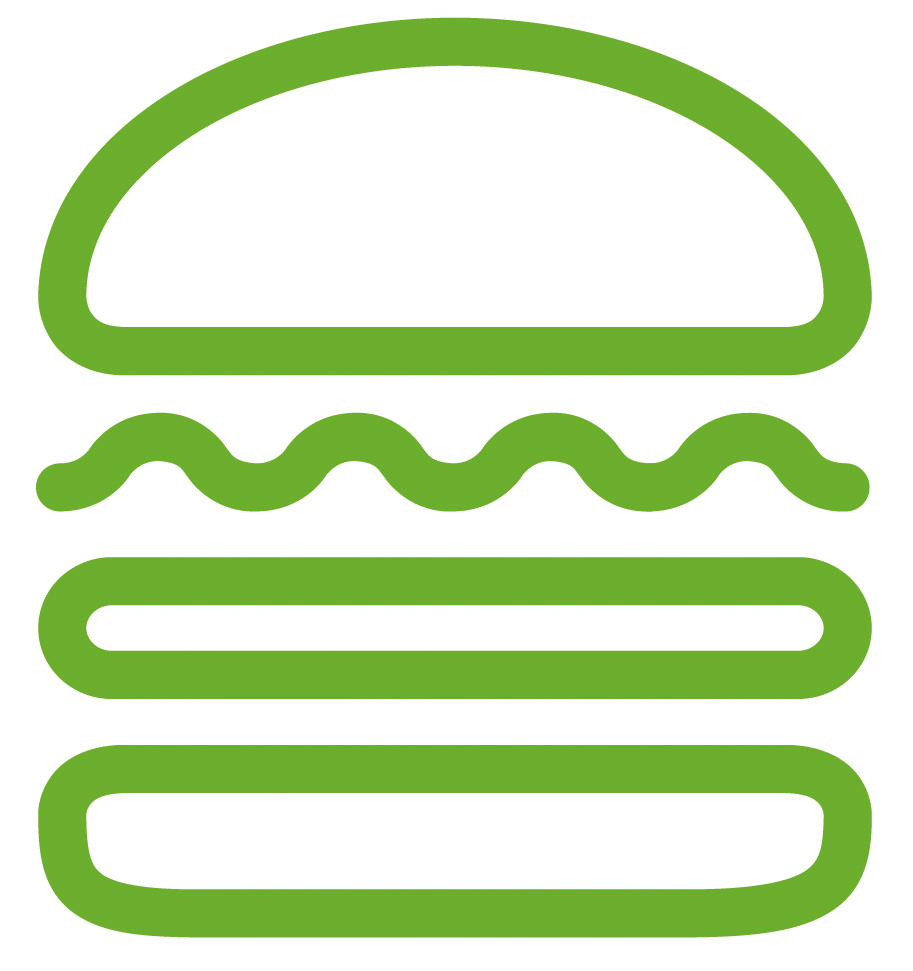

A Short  History of the American Burger
History of the American Burger
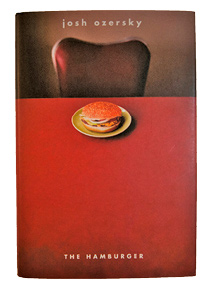
“One of the things that defines us as Americans is our ability to recognize the hamburger as a bundle of meaning, not just a bundle of meat.”
—JOSH OZERSKY, The Hamburger, 2008
Anyone claiming mastery of the American origin of ground beef on a bun is full of, well, hamburger helper. Choose your favorite creation myth: Did the famed Delmonico’s in Lower Manhattan serve America’s first “hamburger steak” in 1837? Or, was it at a county fair in 1884 in Seymour, Wisconsin, that Charles Nagreen slapped ground beef between bread? Or did Louis Lasson, as he claims, invent the sandwich in 1900 when he applied toast to ground steak at the still-open Louis’ Lunch in New Haven, Connecticut? And what about the good folks of Athens, Texas, who still celebrate Uncle Fletch Hamburger Festival, named for Fletcher Davis, who brought burgers to the 1904 St. Louis World’s Fair? We’ll never know.…But we do know we didn’t invent the burger and won’t be the last people to make a great one!

MID-1800s
Is it from Hamburg?
True that a “Hamburg steak” was served in restaurants the mid-1800s, feeding travelers crowding ships bound for America from one of the busiest ports in Europe. Its name may come from the German city, but the burger’s heart is pure red, white, and blue.
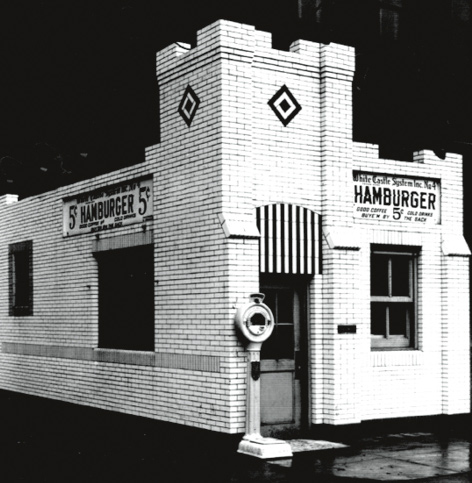
1921
White Castle
Burgers had an image problem in the early 20th century, one that White Castle, America’s first fast food restaurant chain, was born to combat. As its founder, Edgar Waldo “Billy” Ingram wrote, “The word ‘hamburger’ evokes ‘dirty, dingy, ill-lighted hole in the wall’” places that serve meat of questionable provenance. With its signature square thin burgers, systematized production, and pristine white porcelain exteriors, White Castle was, by contrast, a clean, well-lighted place, perfect for post–World War I optimism. Ingram opened first in Wichita, KS, partnering with a fry cook named Walter Anderson, and went on to launch more than 400 stores.

1934
Wimpy’s
Pop culture met the burger in the personage of J. Wellington Wimpy of Popeye fame whose motto, “I would gladly pay you Tuesday for a hamburger today,” became a national catchphrase. Launched in Bloomington, IN, by 1954, Wimpy Grilles had sold over 75 million big burgers and expanded to the United Kingdom.
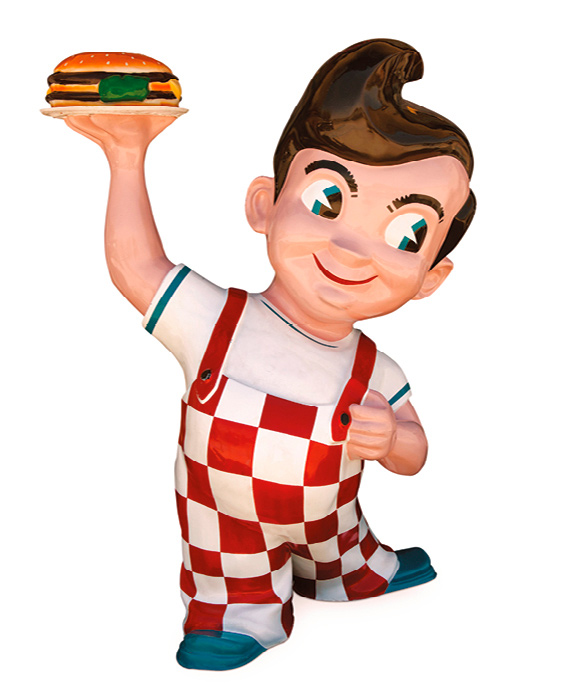
1937
Bob's Big Boy
When Bob Wian created a double-decker, two-patty burger at Bob’s Big Boy in Glendale, CA, he launched the burger’s cartoon iconography, including, eventually, a 12-foot Big Boy statue. That logo quickly went viral under different names, projecting Big Boy’s vibrant roadside personality.
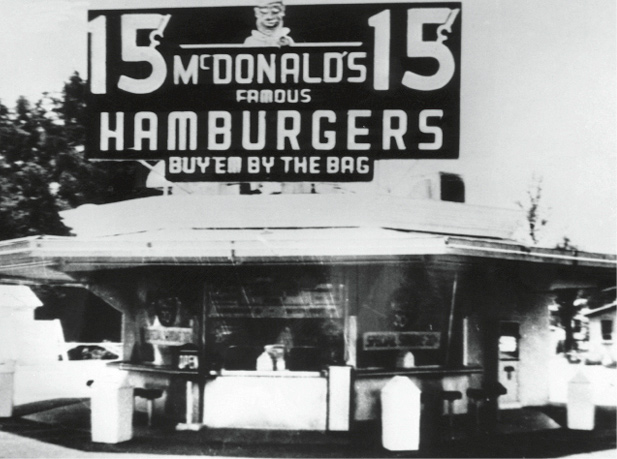
1940
McDonald’s
Burgers were forever merged with car culture by two former truck drivers, the brothers Richard and Maurice “Mac” McDonald, who, after failing at running a local movie theater, created a nifty octagonal drive-in burger joint in 1940, in San Bernardino, CA. Burgers cost 15¢. Operational efficiency mattered: it was all about assembly line production, interchangeable employees, and speed. Crowds went wild. By the mid-1950s, when Ray Kroc famously entered the picture, Richard McDonald had designed the Golden Arches model and the brothers had sold some 21 franchises. A restless entrepreneur, owner of a Chicago milkshake mixer company, Kroc is credited with the vision that made McDonald’s today’s worldwide fast food franchise behemoth.
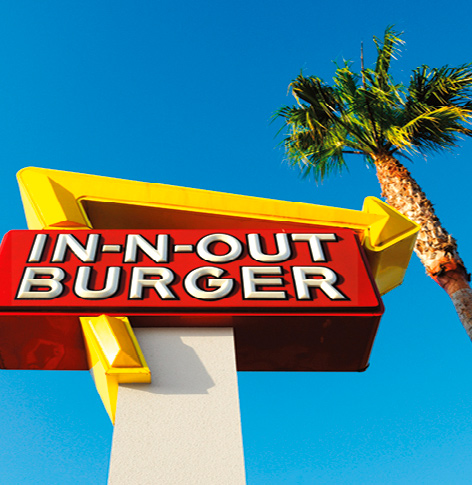
1948
In-N-Out
If California claims the roots of McDonald’s, In-N-Out Burger holds its heart. Launched by Harry and Esther Snyder in Baldwin Park, near Los Angeles, the Snyders embodied brand integrity. In-N-Out never franchised, use quality ingredients, and value their workers—attitudes reinforced by the chain’s crisp and clean red, yellow, and white color palette.
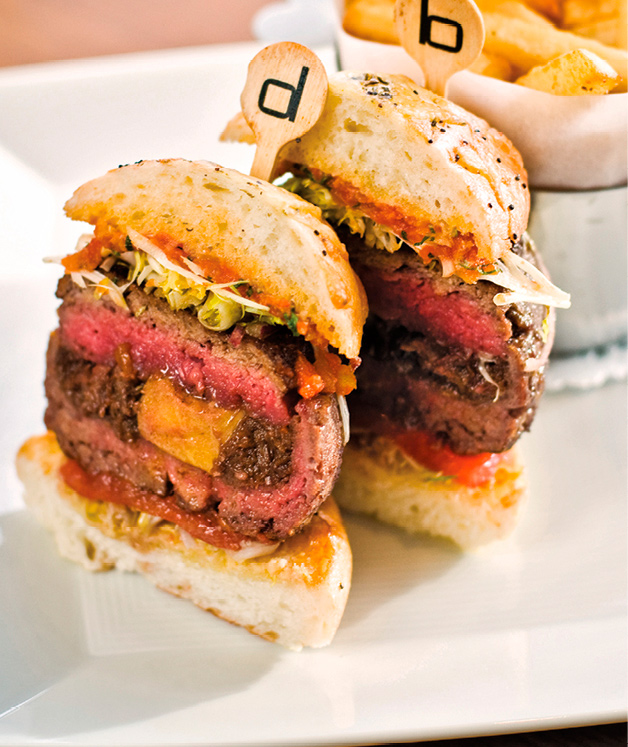
2001
The Gourmet Burger
When, in 2001, the French chef Daniel Boulud made a burger as tall as it is wide—of short ribs slow-braised in red wine, wrapped in sirloin, and stuffed with foie gras and black truffles—and served it on a Parmesan bun for $27 at his theater district db Bistro Moderne, his act of decadence or defiance or both rocked the food world. The db Burger (now $35), spawned a frenzy of luxury burgers that hasn’t quit. Rare is the chef who does not roll out a mile-high virtuoso stack of dry-aged, grass-fed, haute cuisine cred.
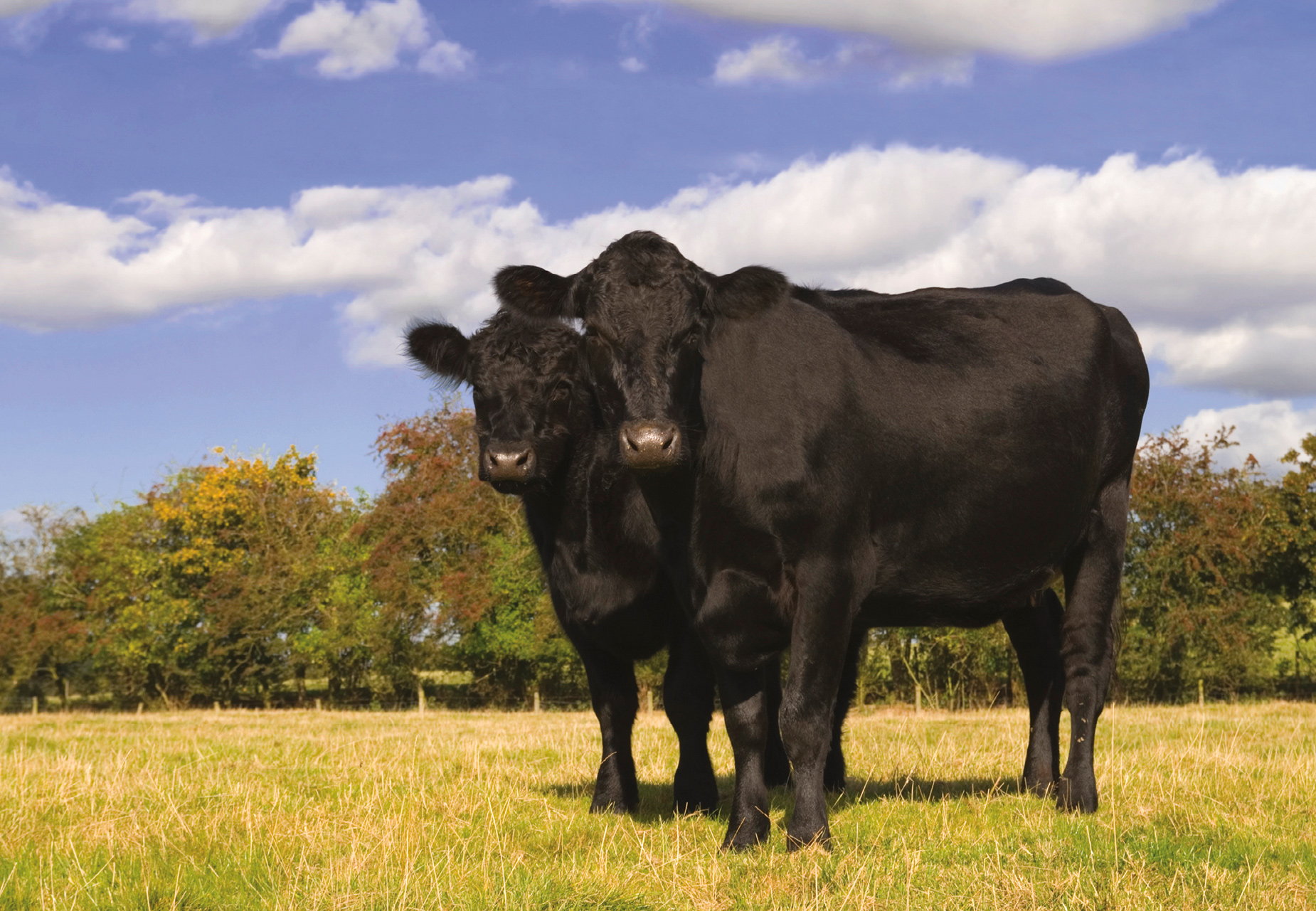

For a company built on burgers, beef quality is at the core of Shake Shack’s belief system. Angus cattle are prized for their muscle meat, and there’s no more crucial task than establishing a solid relationship with farmers to ensure the constant supply of “never-ever”—beef raised with no hormones or antibiotics. Like so many Shack leaders, Jeffrey Amoscato has a culinary degree; he was a cook (Jean-Georges, Le Cirque) who became a manager (The Modern), then ran purchasing for USHG before leading our menu and sourcing efforts.
Jeff is charged with assuring quality and consistency of ingredients at home and abroad. “It was trial and error,” he recalls. “We took the time to inspect dozens of raw material suppliers and countless processing plants to really understand what our beef patty is today.”
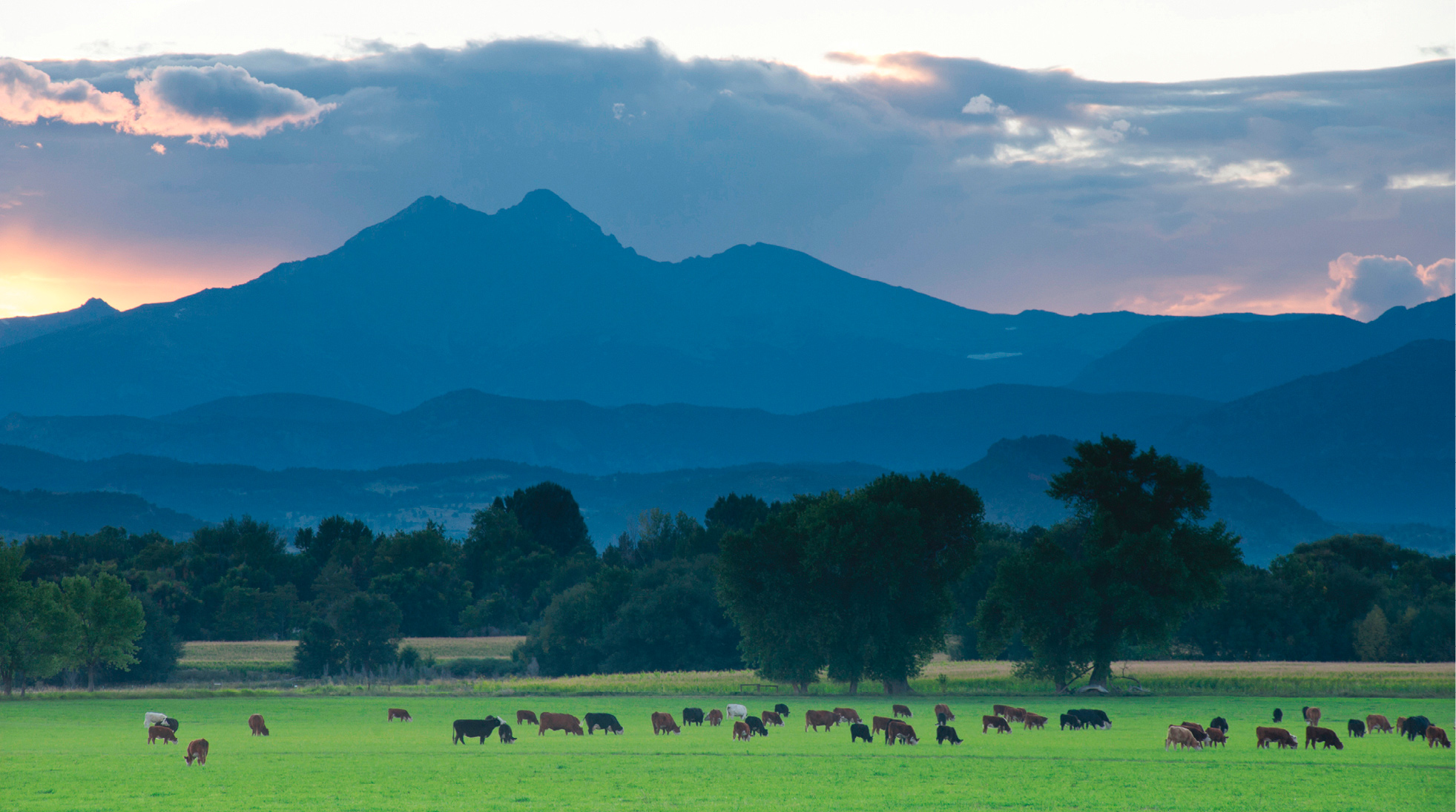
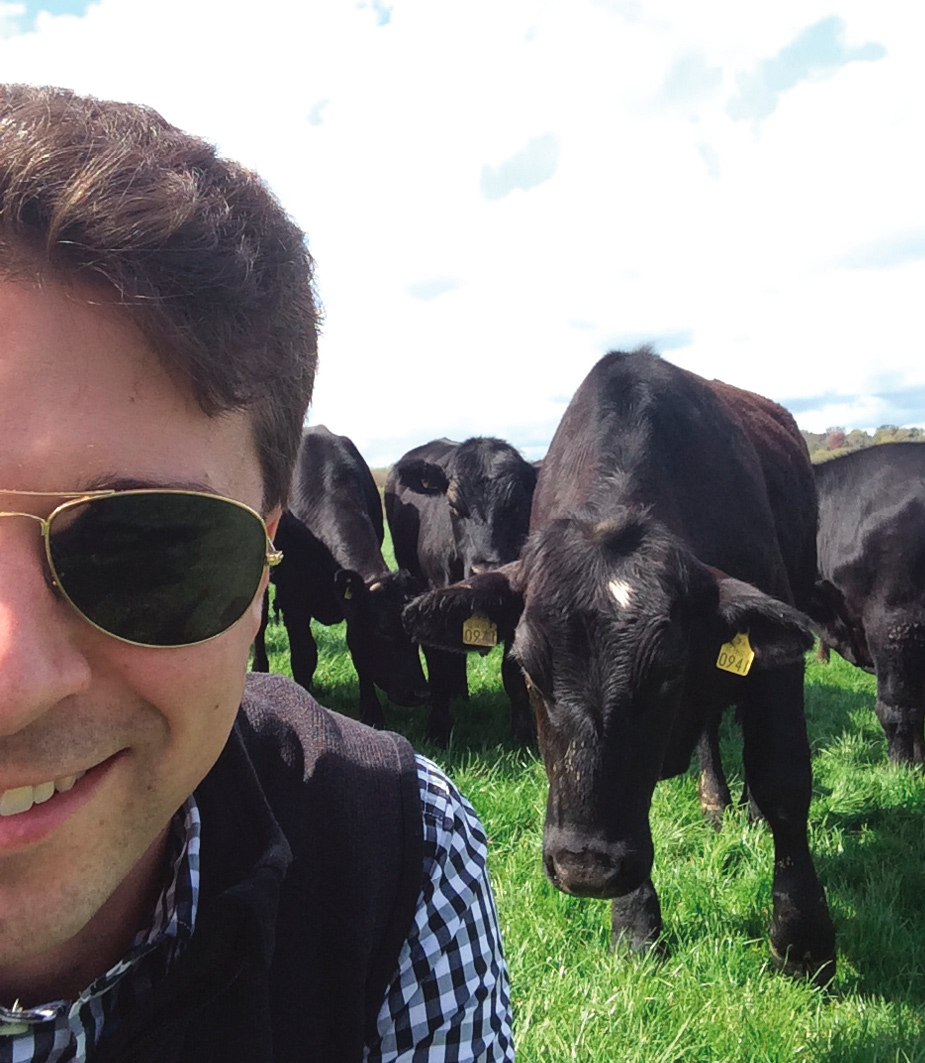
“We search for and partner with beef suppliers who meet our standards—we only use beef raised with no added hormones or antibiotics.”
—JEFFREY AMOSCATO, VP, SUPPLY CHAIN & MENU INNOVATION
Meat for our burgers comes from Angus cattle that have a pretty idyllic life, grazing as they do on grassy stretches of pastureland in Northern Colorado. That Rocky Mountain scenery just has to impact the flavor. Jeffrey, in Ireland, above.
“The Shack Secret Blend Dies with Me!”
Meatmaster Pat LaFrieda’s swears never to divulge our formula, but the blends he suggests make perfect burgers at home.

Pat LaFrieda, third-generation New York butcher and meat supplier to many of the city’s best restaurants, helped us create a proprietary burger blend for the first Shake Shack based on a superior grind of whole muscles, worlds away from the inferior combination of trimmings and added fat in most burger mixes. “I began working with USHG when Floyd Cardoz, then chef at Tabla, suggested I consult with Michael Romano, then chef at Union Square Cafe, on a burger blend,” LaFrieda recalls. “But Shake Shack was different from the start.”
“I have a passion for logistics,” he recalls. “I knew the meat was going from refrigeration at Eleven Madison Park restaurant across the street to a flattop griddle outside in the park—variables that I had not encountered before. So I started worrying about the cooking surface, and how much heat the meat would lose each time it crossed Park Avenue, and how long it would take to get a sear on the griddle. I knew we needed to create a blend to match those conditions. I think that makes us very different, because most butchers don't even worry about how their meat will be cooked.”
Lighter Blend (Think Pinot Noir)
Mix 25% brisket with 75% chuck for a milder burger.


Richer Blend (Think Cabernet)
Mix 20% short rib with 80% chuck for a beefier burger.


Getting it right. Carla Lalli Music, the Shack’s 2005 general manager, recalls what it took: “Because we cooked so many of the same burgers daily, changes to the ratio of fat to lean would be obvious immediately. I can remember days in the beginning when the patties shrank too much and gave off a lot of fat, and others when they were too lean and lacked that signature juiciness. We would get on the phone to Pat and report our findings; he’d retool on his end, even sending a new batch that same day, and before too long we were at a place where the burgers hit that sweet spot 999 times out of 1,000.”
Freshly ground, never frozen. It almost goes without saying that LaFrieda’s meat is ground in the wee hours and delivered fresh to every Shack the next morning. These days, Pat still serves most East Coast Shacks, but he’s been part of the family and helps numerous other talented butchers around the globe to match his process.
Making “pucks.” “We had never made formed burgers in our history, we just delivered ground meat in a bag,” Pat explains. “But Shake Shack asked us to make ‘pucks,’ which are four ounces of meat in a ball they’d press down on the griddle to get that famous sear. They told us whatever it cost for labor, they’d understand. So I bought biscuit cutters! We were still working out of Manhattan’s meat market, on Pat LaFrieda Lane off Washington Street. And I had a crew of five who did nothing but form burgers all afternoon. That was just for the first Shack in the Park. Eventually, of course, we realized we had to buy machinery to shape our burgers. And that made the process, and the puck even better.”
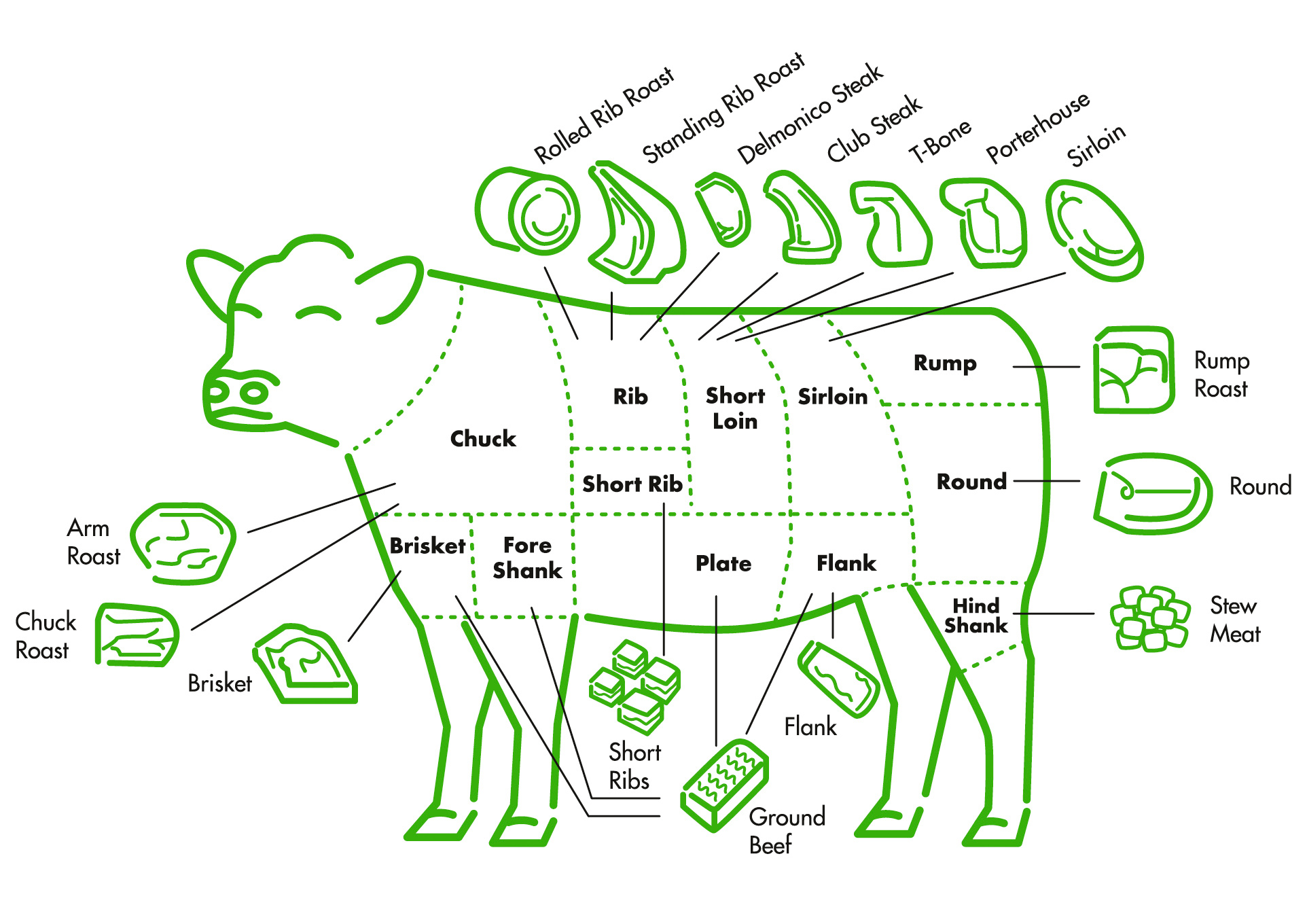
Illustration by Cathie Urushibata.
“If you follow the golden rules that I’ve laid out for you, you can make your own version of Shake Shack burgers at home. Forget about the economy cuts, the flavor’s in the whole muscles.”
—PAT LAFRIEDA
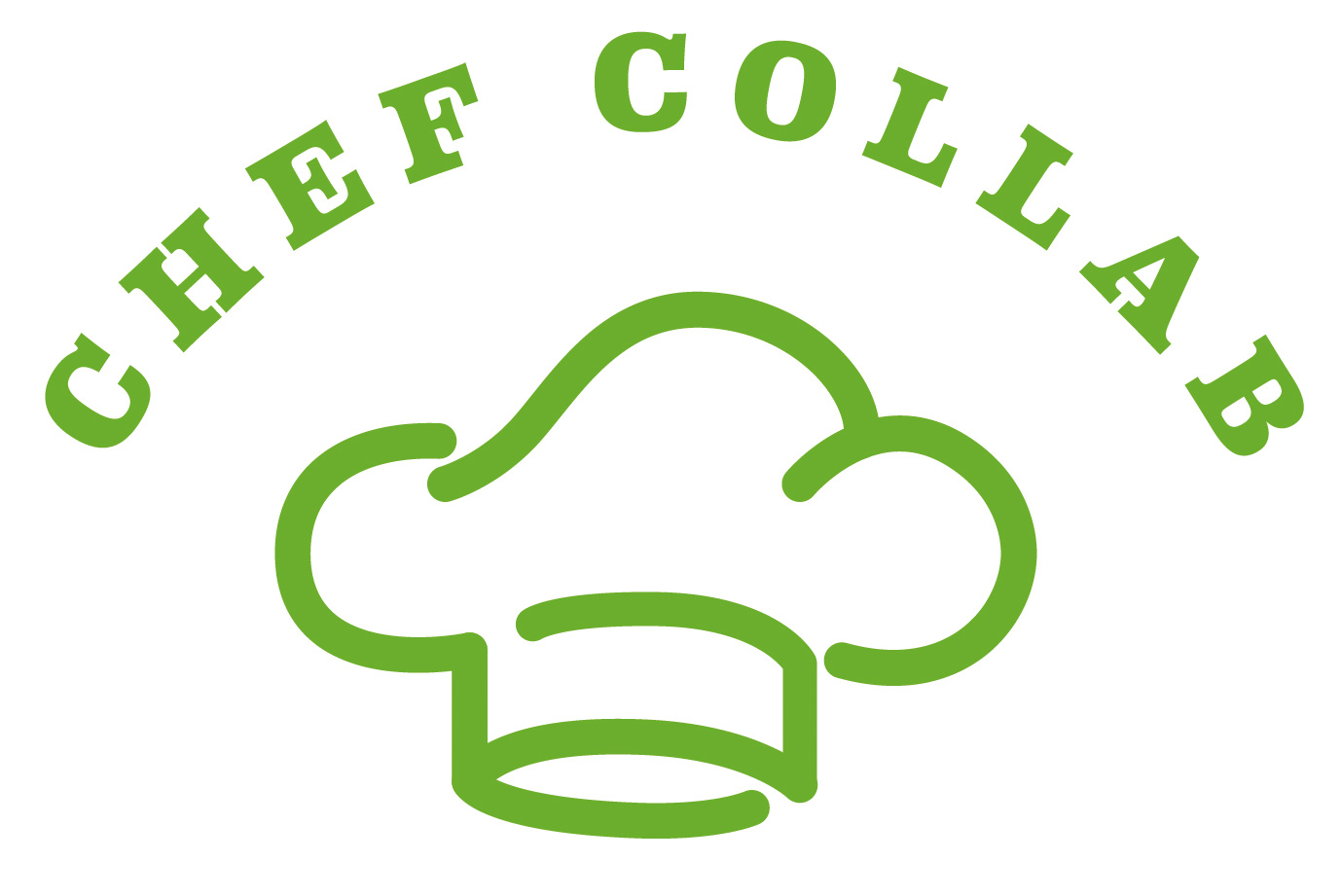
Mark worked with Chef Zaiyu Hasegawa of restaurant Jimbocho DEN in Tokyo to create the DEN Shack, a burger topped with applewood- smoked bacon, red miso ShackSauce, sancho peppercorns, and Japanese-style marinated cucumbers.
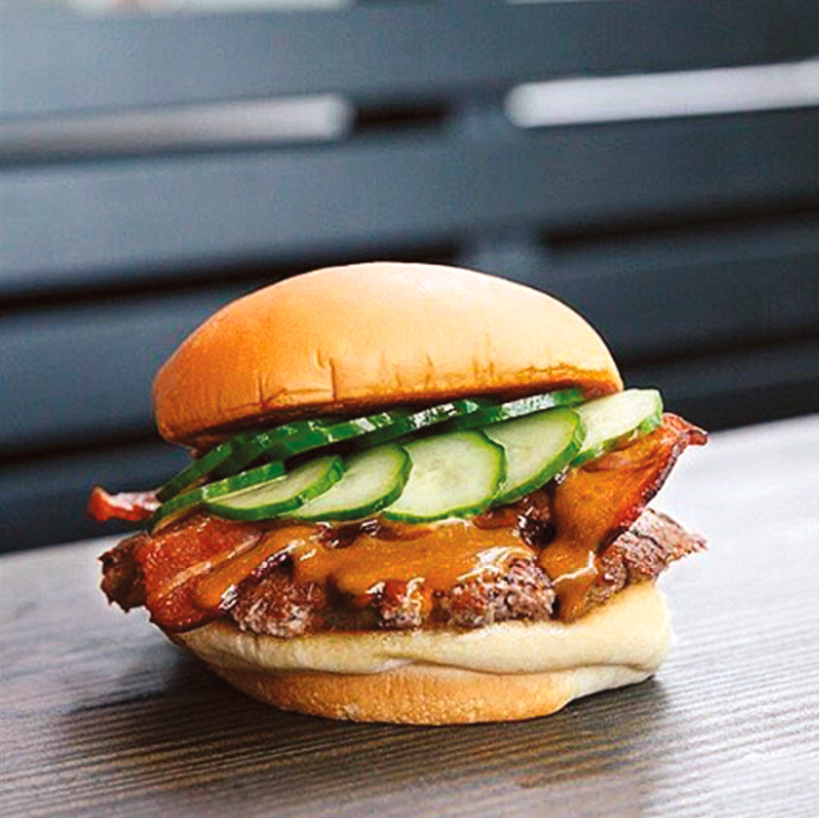
Grinding Your Own
Really cold meat’s the secret; chill to below freezing first.
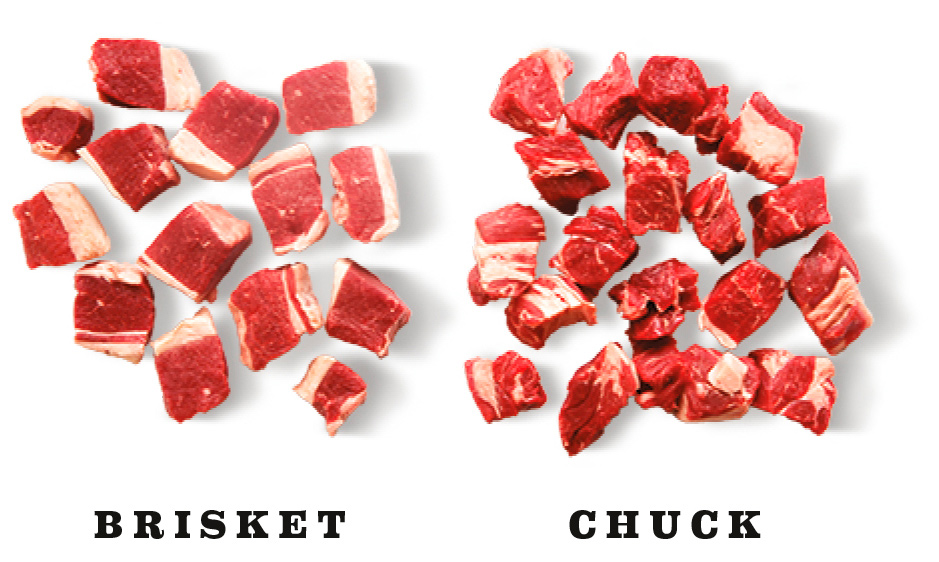
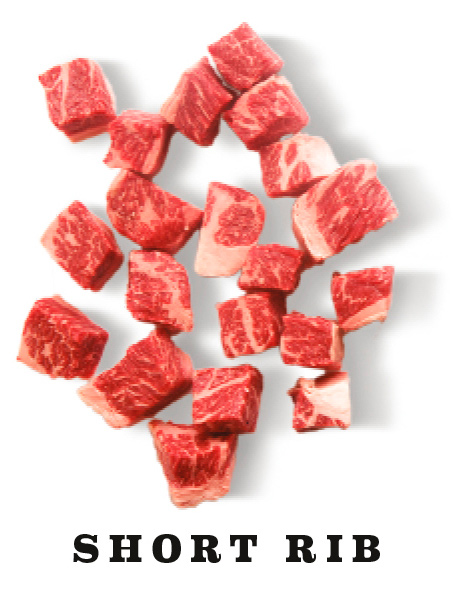
Pro Tip
Cutting the meat into smaller pieces before you start makes it easier to feed it into the grinder.
The First Grind

Think of this as a rough chop, not a grind, so use the coarser plate first. You’ll immediately see a separation: little bits of fat and little bits of protein.

The Second Grind
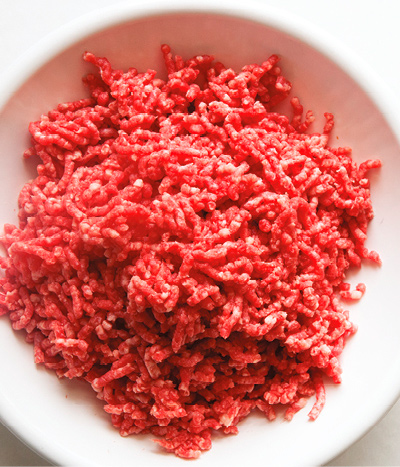
Grinding the chopped meat again with a finer plate ensures that you get a great mix of both kinds of muscle meat and fat in every bite of your burger.
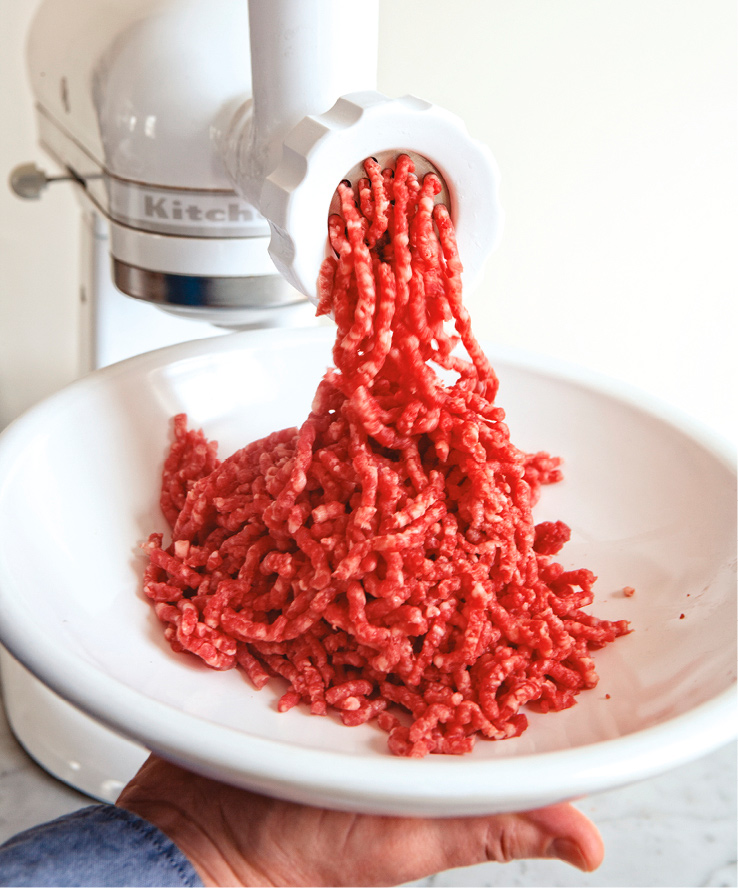

Anatomy of a ShackBurger

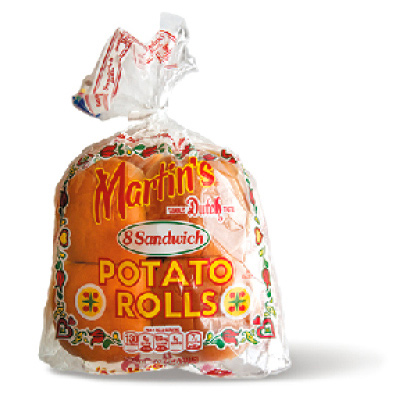 POTATO BUN Did you ever think of the ratio of bun to meat? The perfect potato bun never tries to take anything away from the burger: it absorbs juices and cradles the meat. It just does its job beautifully.
POTATO BUN Did you ever think of the ratio of bun to meat? The perfect potato bun never tries to take anything away from the burger: it absorbs juices and cradles the meat. It just does its job beautifully.
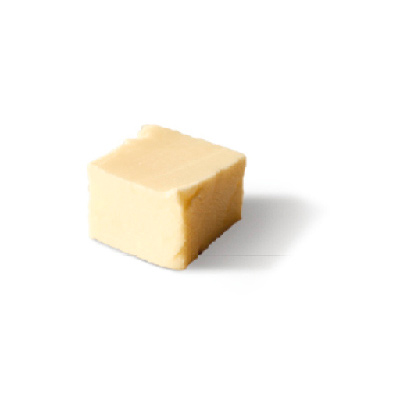 UNSALTED BUTTER Toasting the bun is the way we get a contrast of textures; butter is the secret to crispiness. We say a well toasted bun should look like perfectly cooked French toast.
UNSALTED BUTTER Toasting the bun is the way we get a contrast of textures; butter is the secret to crispiness. We say a well toasted bun should look like perfectly cooked French toast.
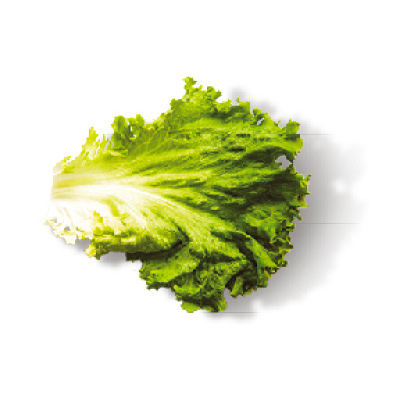 GREEN LEAF LETTUCE The ShackBurger is not just about the flavors, it’s an extremely visual burger, designed to delight. Frilly green leaf lettuce is more than a refreshing note that offers great textures. Green leaf lettuce is the smile.
GREEN LEAF LETTUCE The ShackBurger is not just about the flavors, it’s an extremely visual burger, designed to delight. Frilly green leaf lettuce is more than a refreshing note that offers great textures. Green leaf lettuce is the smile.
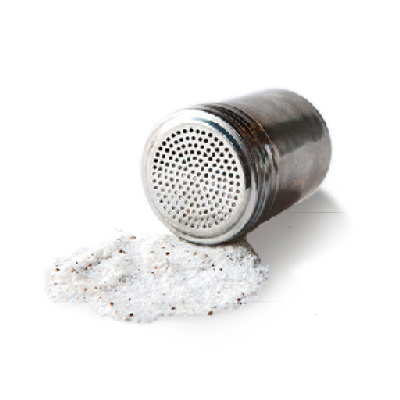 OUR SALT & PEPPER MIX We mix ½ cup kosher salt with ½ teaspoon freshly ground pepper and use that mixture to season our burgers as they cook. You’ll see we call for a pinch or two of the mixture in every recipe.
OUR SALT & PEPPER MIX We mix ½ cup kosher salt with ½ teaspoon freshly ground pepper and use that mixture to season our burgers as they cook. You’ll see we call for a pinch or two of the mixture in every recipe.
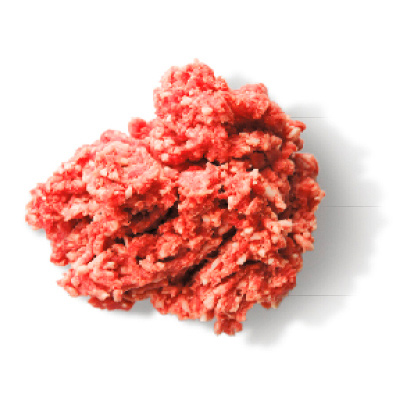 GROUND BEEF Our burgers are made from our own special blend of freshly ground, all-natural Angus beef, raised with no hormones or antibiotics. It’s so flavorful, all you need to season it is salt and pepper.
GROUND BEEF Our burgers are made from our own special blend of freshly ground, all-natural Angus beef, raised with no hormones or antibiotics. It’s so flavorful, all you need to season it is salt and pepper.
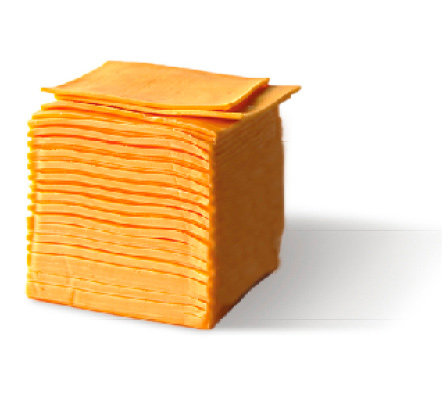 AMERICAN CHEESE We get ours from Wisconsin, the very heart of American cheese country. It is quite simply the creamiest, meltingest cheese there is, bringing its special tang to a cheeseburger. Buy it sliced: it’s easier to drape on a hot burger.
AMERICAN CHEESE We get ours from Wisconsin, the very heart of American cheese country. It is quite simply the creamiest, meltingest cheese there is, bringing its special tang to a cheeseburger. Buy it sliced: it’s easier to drape on a hot burger.
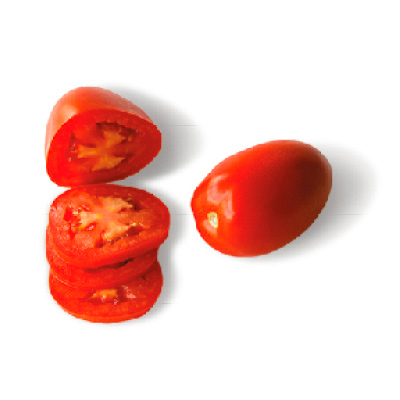 ROMA TOMATOES Our field-ripened tomatoes are Romas. They are firm enough to hold their shape and color and add a sweet note to balance the salty crust of the burger.
ROMA TOMATOES Our field-ripened tomatoes are Romas. They are firm enough to hold their shape and color and add a sweet note to balance the salty crust of the burger.
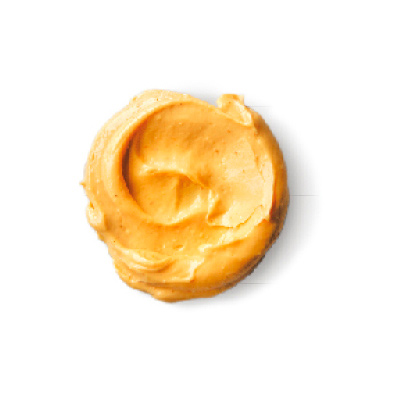 SHACKSAUCE We’re surely not going to publish THE formula for our secret sauce. (We’re not crazy!) But this recipe (this page) comes pretty darn close with home ingredients. It’s our homage to everything sweet, salty, sour, and smoky that’s ever been put on top of a burger.
SHACKSAUCE We’re surely not going to publish THE formula for our secret sauce. (We’re not crazy!) But this recipe (this page) comes pretty darn close with home ingredients. It’s our homage to everything sweet, salty, sour, and smoky that’s ever been put on top of a burger.
45SECONDS: THE AMOUNT OF TIME IT TAKES FOR THE CHEESE TO MELT.
“The cheeseburger is a thoroughly contemporary American phenomenon, but it is primal in its capacity to evoke a collective—and positive—human experience.”
—ELISABETH ROZIN, The Primal Cheeseburger, 1994
LOCAL HERO

CHAMBERSBURG, PA
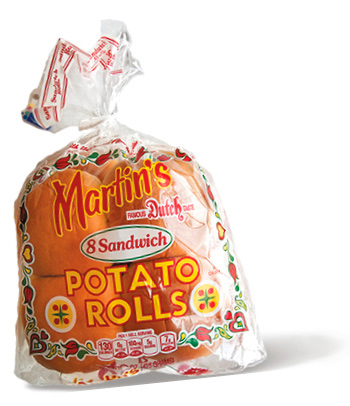
Martin’s is an American family story that began in 1955 in Lois and Lloyd Martin’s humble kitchen in the heart of Pennsylvania Dutch country. “Mother had a recipe, Dad had a vision,” recalls son Jim Martin, now president of the company that turns out tens of millions of potato rolls a week.
Loading his ’54 Dodge Coronet with the rolls Lois baked, Lloyd would head to the farmers’ market and sell out so fast that he soon converted their one-car garage into a bakery. Now there are two factories, but the rolls are still old-fashioned, made from potatoes, milk, high-protein wheat flour, sunflower oil, sugar, and yeast, and proudly non-GMO. Their signature pale yellow color, once artificial, today comes from turmeric and annatto.
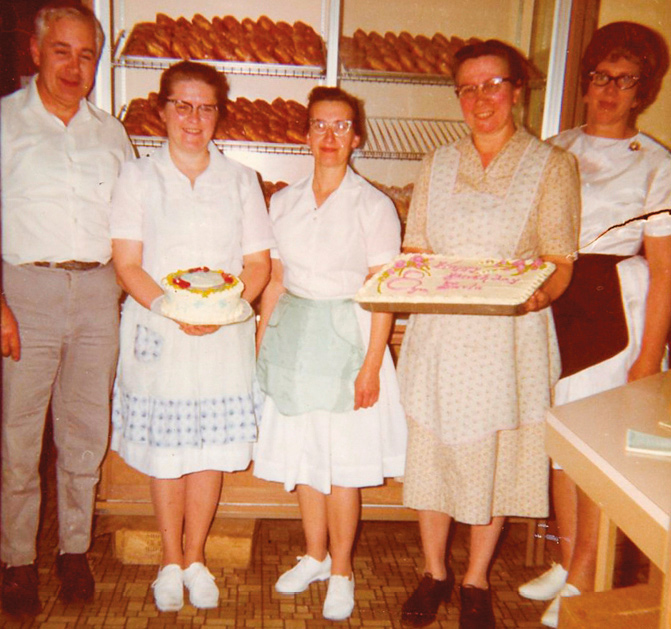
Toast the Buns Ahead
Think of this as a lovely ritual: Heat up your griddle and lavish attention on those buns so they’ll be ready the second your burger’s done. Begin by melting butter in a small pot. With a soft brush, paint the butter on the insides of the buns. Place butter-side down on the griddle till they’re beautifully browned.
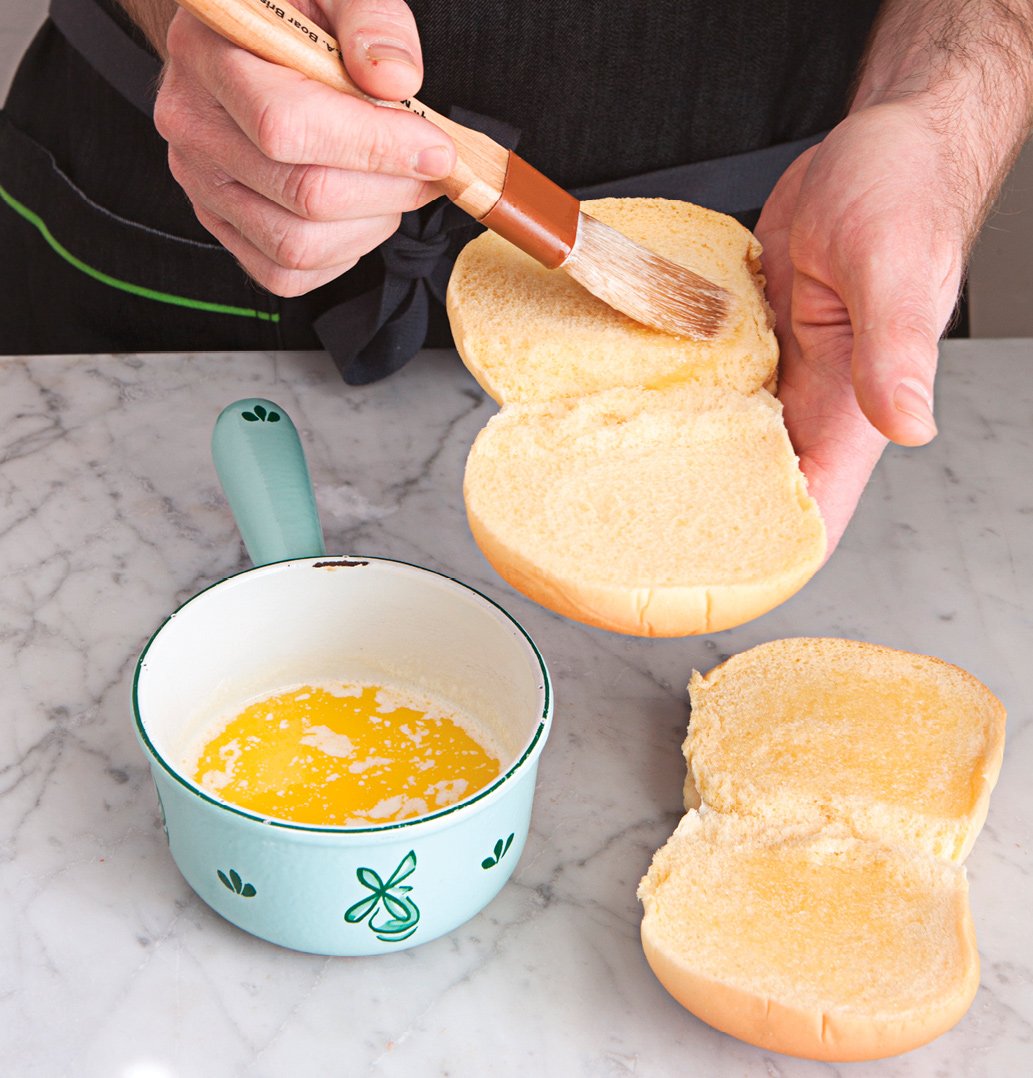
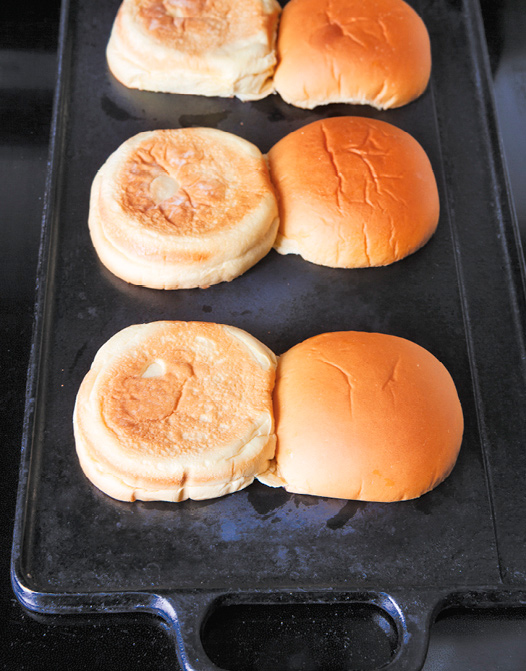

Making a ShackBurger
Great beef, sturdy tools, a bit of practice—and you’re in the burger business.
The Right Tools
Stainless steel spatulas are your great friends. Sturdiness counts. And for griddles, we love Lodge cast iron, still made by an American company founded in 1896 in South Pittsburg, Tennessee. The cooking surface only improves with use.
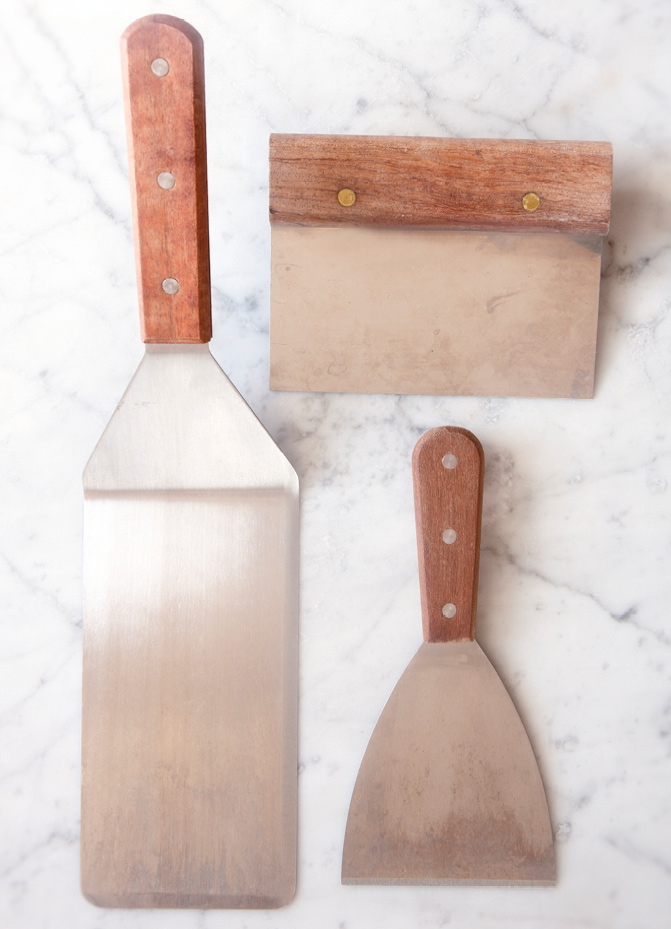
Pro Tip
Grease and smoke are inevitable by-products of cooking burgers right. At home we use a large upside down mesh strainer to keep the grease splatter down.
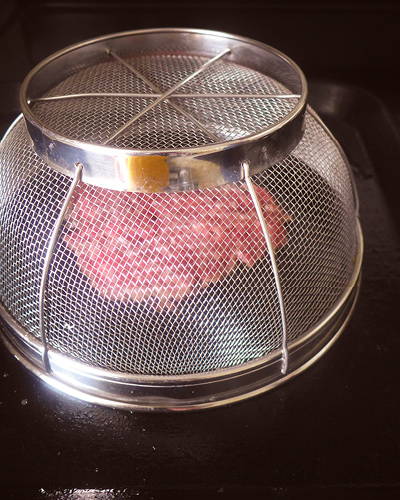
1. The ground beef puck meets the hot griddle pan, seasoned side down.
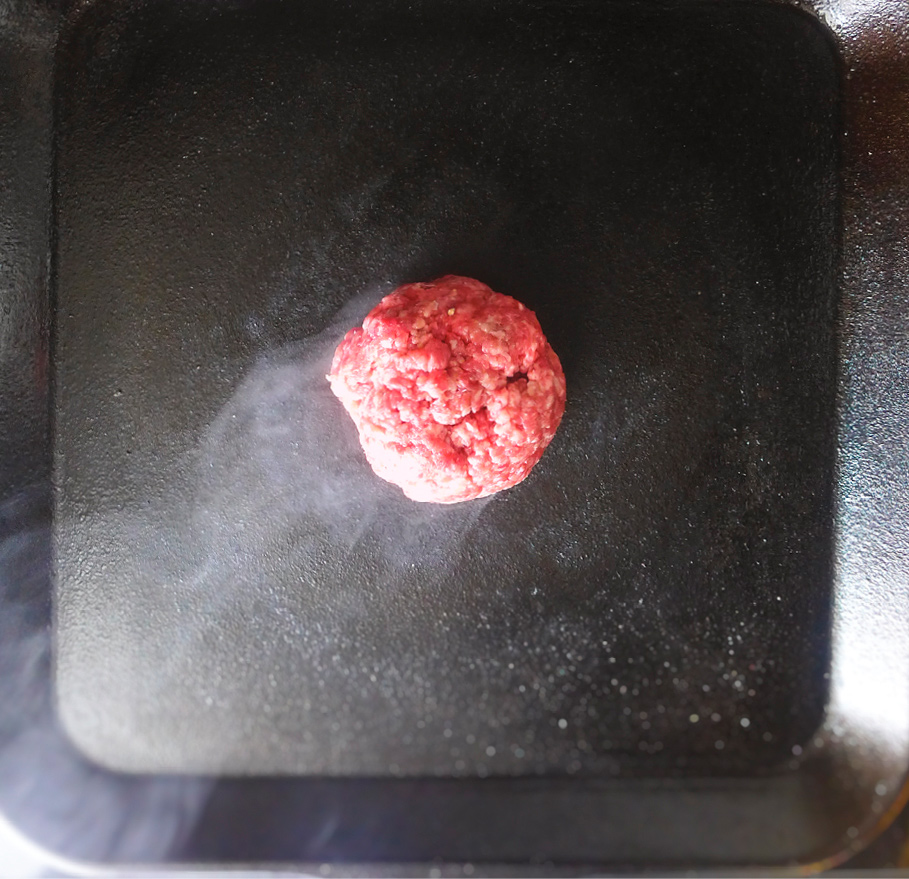
2. A large, sturdy metal spatula helps firmly smash the ground meat puck into a thick round patty, about 4½ inches wide and ⅓ inch thick.
The first 30 seconds are crucial: that’s when you smash the meat to make the most evenly browned burger. Firmly press down on the spatula with another stiff spatula to help flatten the burger quickly.
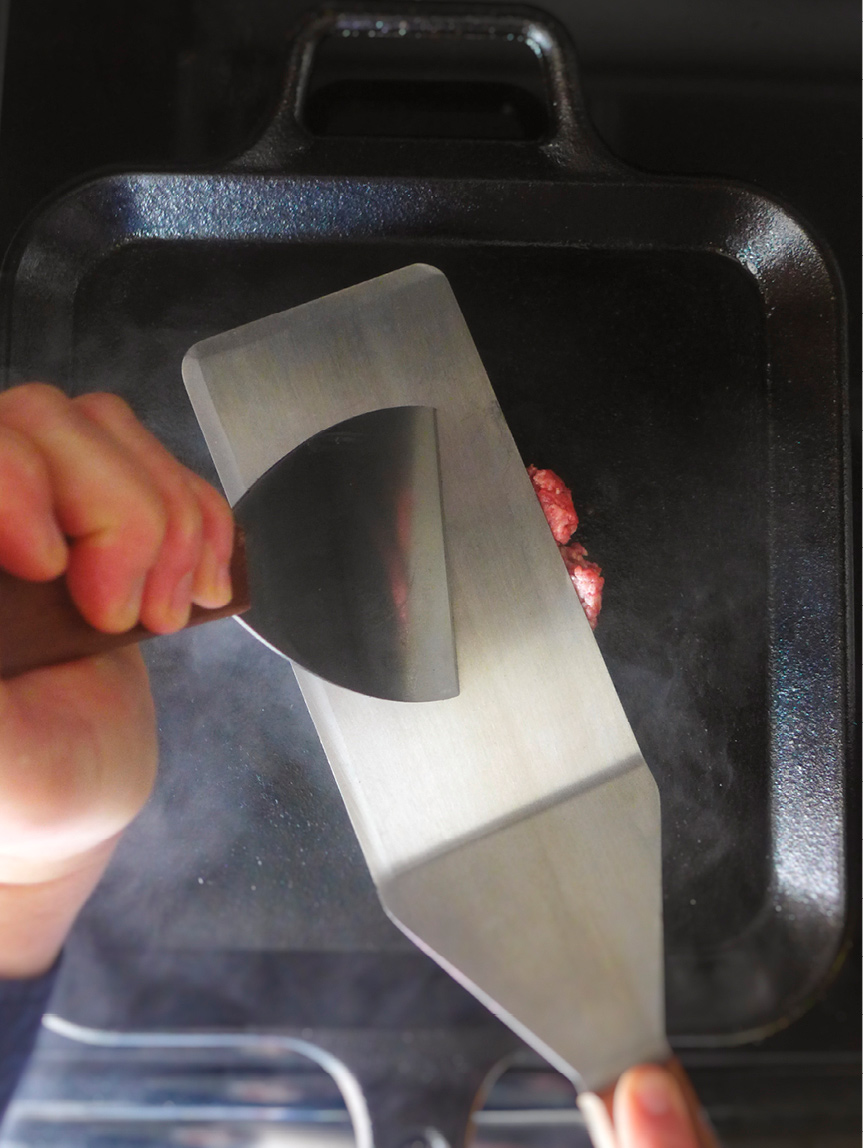
Push hard! Our grill teams have great forearms.
3. Add 2 pinches of salt and freshly ground pepper to the burger top.
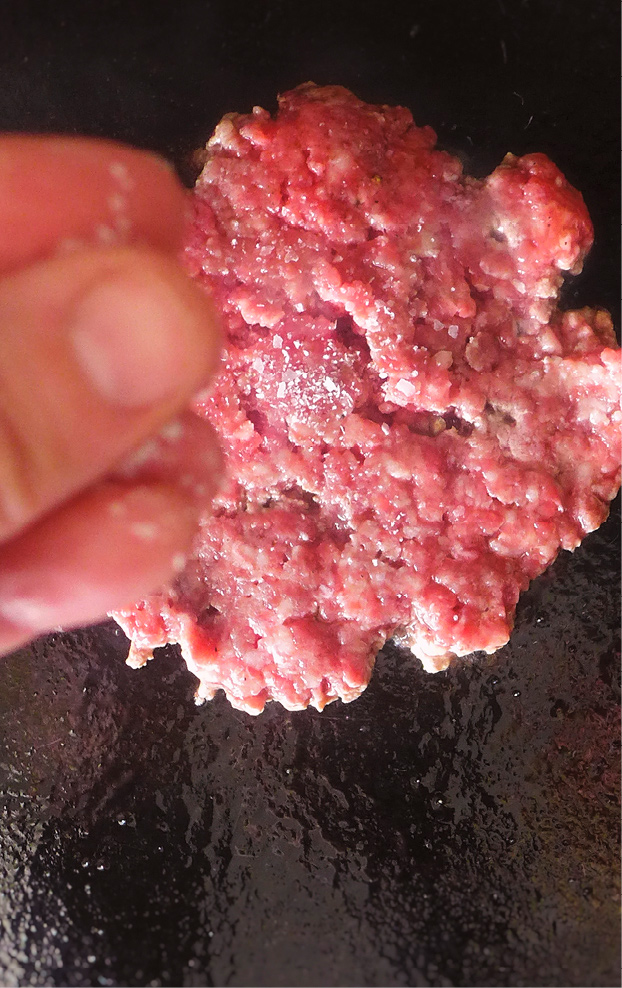
4. When the edges beneath the burger become dark brown and crisp, and pockets of juices on the surface are bubbling hot, use one of the sturdy spatulas to scrape the burger and its crispy browned crust from the griddle. Another spatula is useful to keep the burger from sliding away.
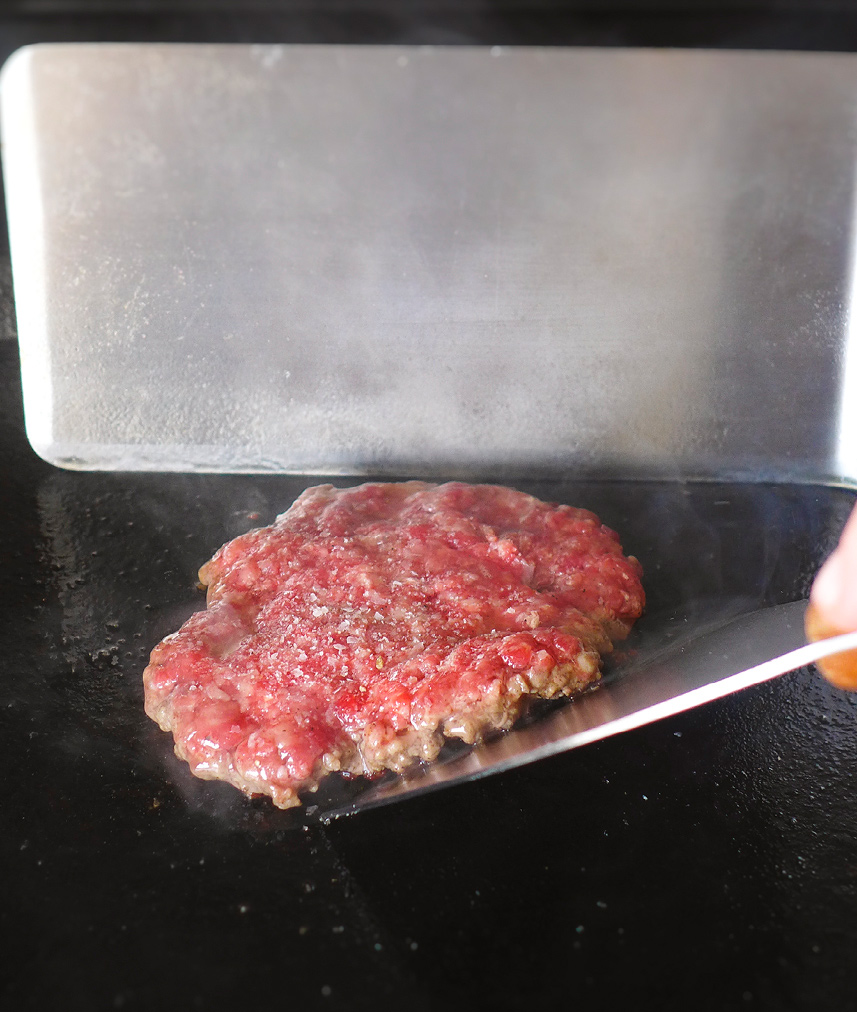
5. The crisp, browned top crust of a just flipped burger.
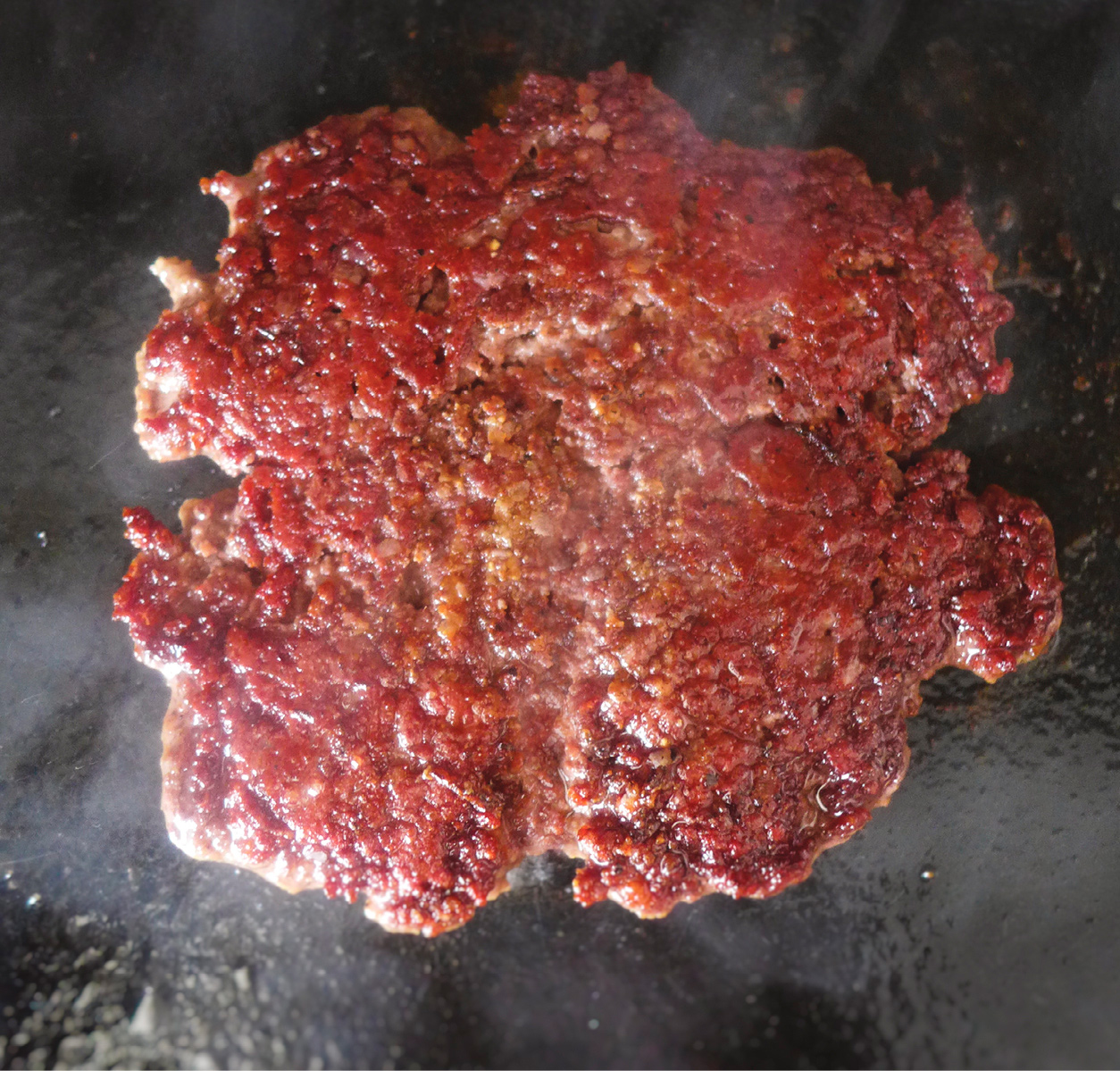
6. Just after the burger is flipped, add the cheese.

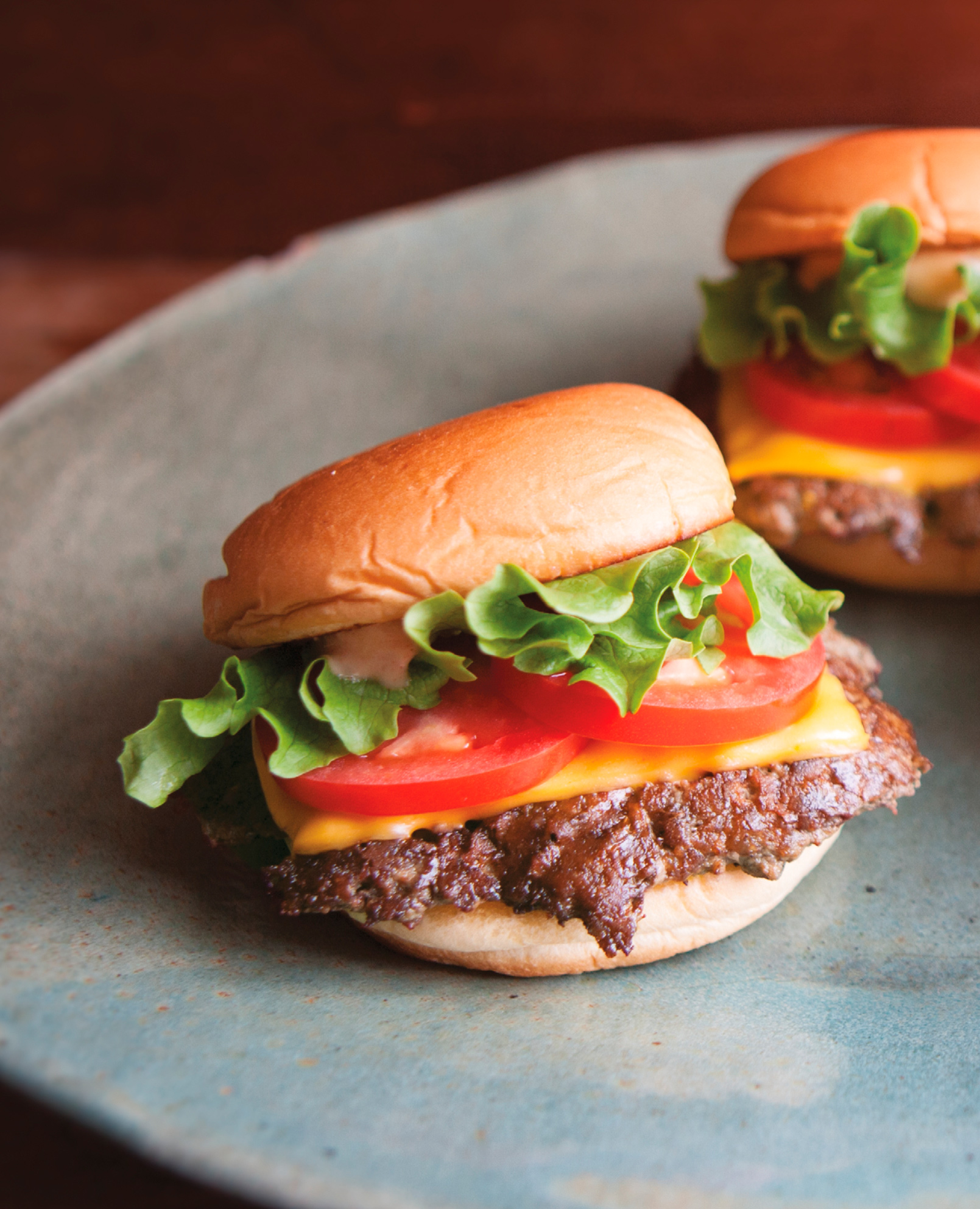


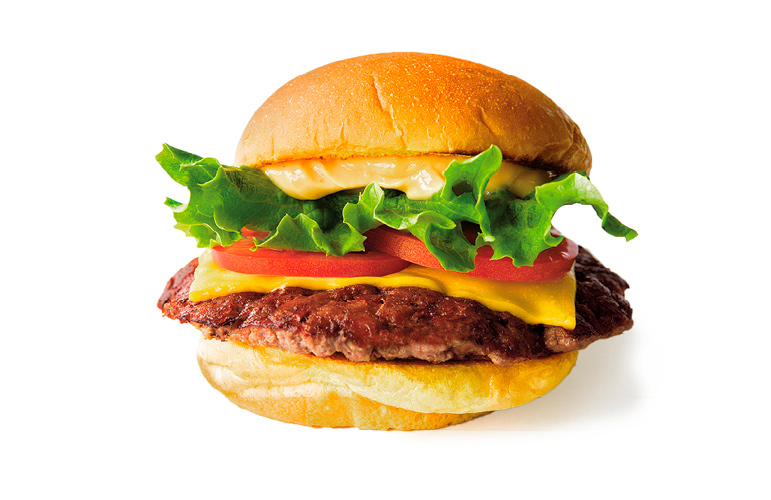
Okay, here’s our sacred cow!
MAKES 4
Most likely the reason you have this book in your hands—our version of the great American cheeseburger. Like all deceptively simple things, it took us years to get it right, but now you can master burger perfection in five minutes.
4hamburger potato buns
4tablespoons unsalted butter, melted
4tablespoons ShackSauce (recipe follows)
4pieces green leaf lettuce
8¼-inch slices ripe plum tomato
1pound very cold ground beef, divided into 4 pucks
½teaspoon Our Salt & Pepper Mix
4slices American cheese
1. Heat a cast-iron griddle over medium-low heat until warm. Meanwhile, open the hamburger buns and brush the insides with the melted butter. A soft brush is helpful here. Place the buns buttered side down on the griddle and toast until golden brown, 2 to 3 minutes. Transfer buns to a plate. Spoon the sauce onto the top bun. Add a piece of the lettuce and two slices of tomato.
2. Increase the heat to medium and heat the griddle until hot, 2 to 3 minutes.
3. Evenly sprinkle a pinch of Our Salt & Pepper Mix on top of each puck of meat.
4. Place the pucks on the griddle, seasoned side down. Using a large, sturdy metal spatula, firmly smash each puck into a ⅓-inch-thick round patty. Pressing down on the spatula with another stiff spatula helps flatten the burger quickly. Evenly sprinkle another big pinch of Our Salt & Pepper Mix.
5. Cook the burgers, resisting the urge to move them, until the edges beneath are brown and crisp, and juices on the surface are bubbling hot, about 2½ minutes. Slide one of the spatulas beneath the burger to release it from the griddle and scrape up the caramelized browned crust. Use the other spatula to steady the burger and keep it from sliding. Flip the burgers. Put the cheese on top and cook the burgers 1 minute longer for medium. Cook more or less depending on your preference.
6. Transfer the cheeseburgers to the prepared buns and enjoy.

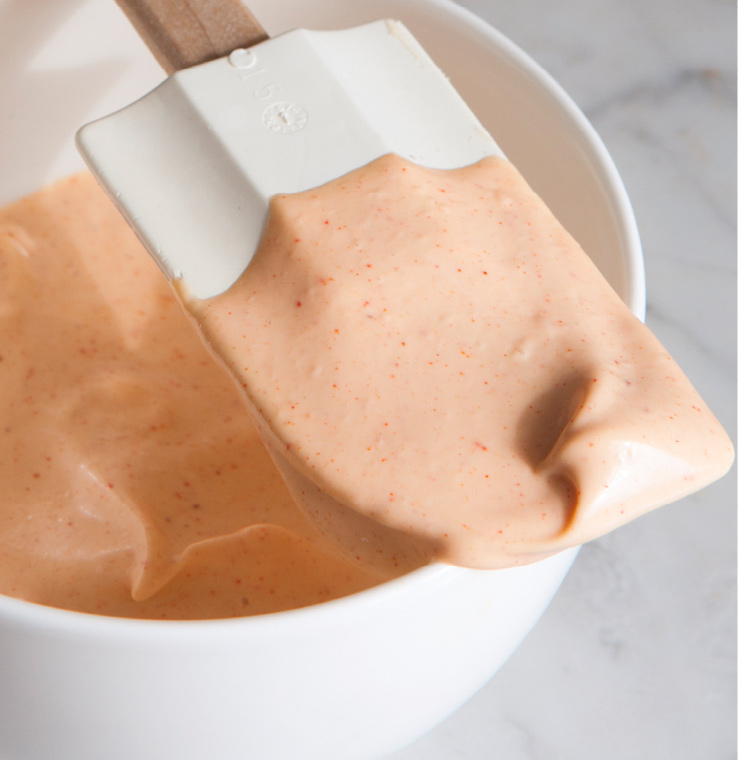
MAKES ABOUT ½ CUP
Long ago we threw away the key to the secret recipe for ShackSauce; but we promise to get you really close with ingredients easily found in your kitchen.
½cup Hellmann’s mayonnaise
1tablespoon Dijon mustard
¾teaspoon Heinz ketchup
¼teaspoon kosher dill pickling brine
Pinch of cayenne pepper
Put all the ingredients in a small mixing bowl and stir until well combined. Sauce will keep, covered, in the refrigerator for up to one week.
LOCAL HERO
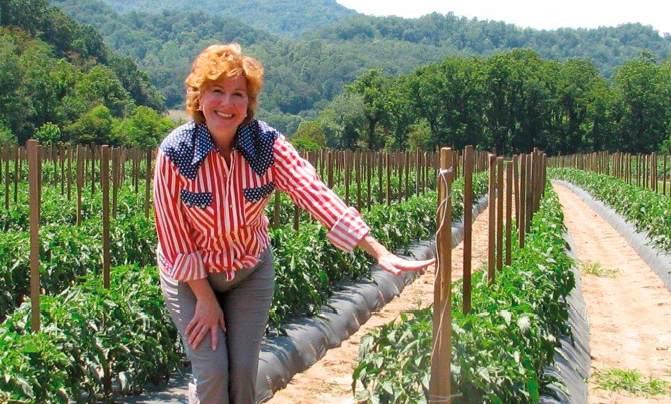

CENTRAL FLORIDA
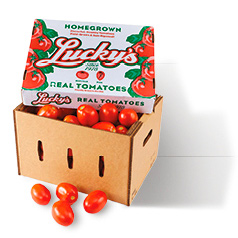
You can’t make this stuff up! Lucky Lee, whose real name is Karen, was part of a performing family group called The Sunrise Show Band, when their Florida grandmother fell ill. The family left show business and moved to Ruskin, in central Florida, where they discovered the tomato business. “What if we brought a truckload of fresh, juicy, field-grown, vine-ripened tomatoes to New York in the dead of winter?” they thought. Lucky visited restaurant kitchens with “a box on my shoulder and a knife in my belt,” cajoling chefs to sample. Lucky Lee’s tomatoes are worlds away from the dubious practices of factory farms portrayed in Barry Estabrook’s Tomatoland. “Ours is a craft business; we only pick when ripe,” says Lee, chief supplier of Roma tomatoes to many New York Shake Shacks.


MAKES 4
Here’s our version of a burger based on everything that’s great about smoky bacon. For this recipe, Mark went deep into his Italian-American childhood, remembering his mother’s pan-fried pork chops with cherry peppers, and how the spicy pickled peppers balanced the richness of the pork.
4hamburger potato buns, toasted (this page)
4tablespoons unsalted butter, melted
4tablespoons ShackSauce
1pound very cold ground beef, divided into 4 pucks
½teaspoon Our Salt & Pepper Mix
4slices American cheese
8slices double-smoked bacon, cooked, broken in half (this page)
8tablespoons diced pickled red cherry peppers
Follow the ShackBurger recipe, topping the cheeseburger with great bacon (we love Niman Ranch, this page) and red cherry peppers instead of lettuce and tomato.


MAKES 4
Among devoted Shack fans, this burger has cult status. It’s only officially been served twice in our history! But folks know they can always order a bacon hamburger and ask us for a side of peanut butter sauce.
4hamburger potato buns, toasted (this page)
4tablespoons unsalted butter, melted
1pound very cold ground beef, divided into 4 pucks
½teaspoon Our Salt & Pepper Mix
8slices cooked bacon, broken in half (this page)
8tablespoons smooth peanut butter, thinned with a little canola oil
Follow the ShackBurger recipe, topping the burger with great bacon and two spoonfuls of thinned peanut butter instead of lettuce, tomato, cheese, and ShackSauce.
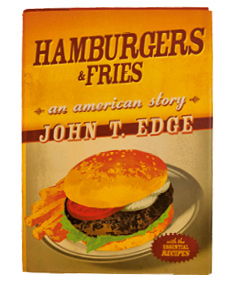
“I just want a burger. I want to hear the low hiss of a patty hitting a flattop.…I want to scald my tongue on a goldenrod slice of American cheese as it trails down the craggy circumference of that patty.”
—JOHN T. EDGE, Hamburgers & Fries, 2005
Think Like a Burger Maker
By Mark Rosati
My favorite burger is a plain cheeseburger. I wish it were more complicated, but it’s not. If the meat is fresh (say “No” to that convenient packaged pre-ground meat, and just once, have whole muscles ground for you; I promise, you’ll taste the difference), well seasoned (simply, with salt and freshly ground pepper), properly cooked with a nice salty crust (a quick sear on a hot, flat surface to lock in the juices, but not cooked so long those juices dry up), the cheese is melted and creamy, and it's cradled by a bun that’s nicely toasted yet still soft and pillowy on the outside, I don’t ask for anything more.
That is the most perfect burger bite of my life: when the interior juices of the burger meet the creaminess of the cheese,comingle, and create a natural sauce. If you understand the basics, you can have that experience, too. It’s the most primal, simple, and pleasurable expression of what a great burger is all about.
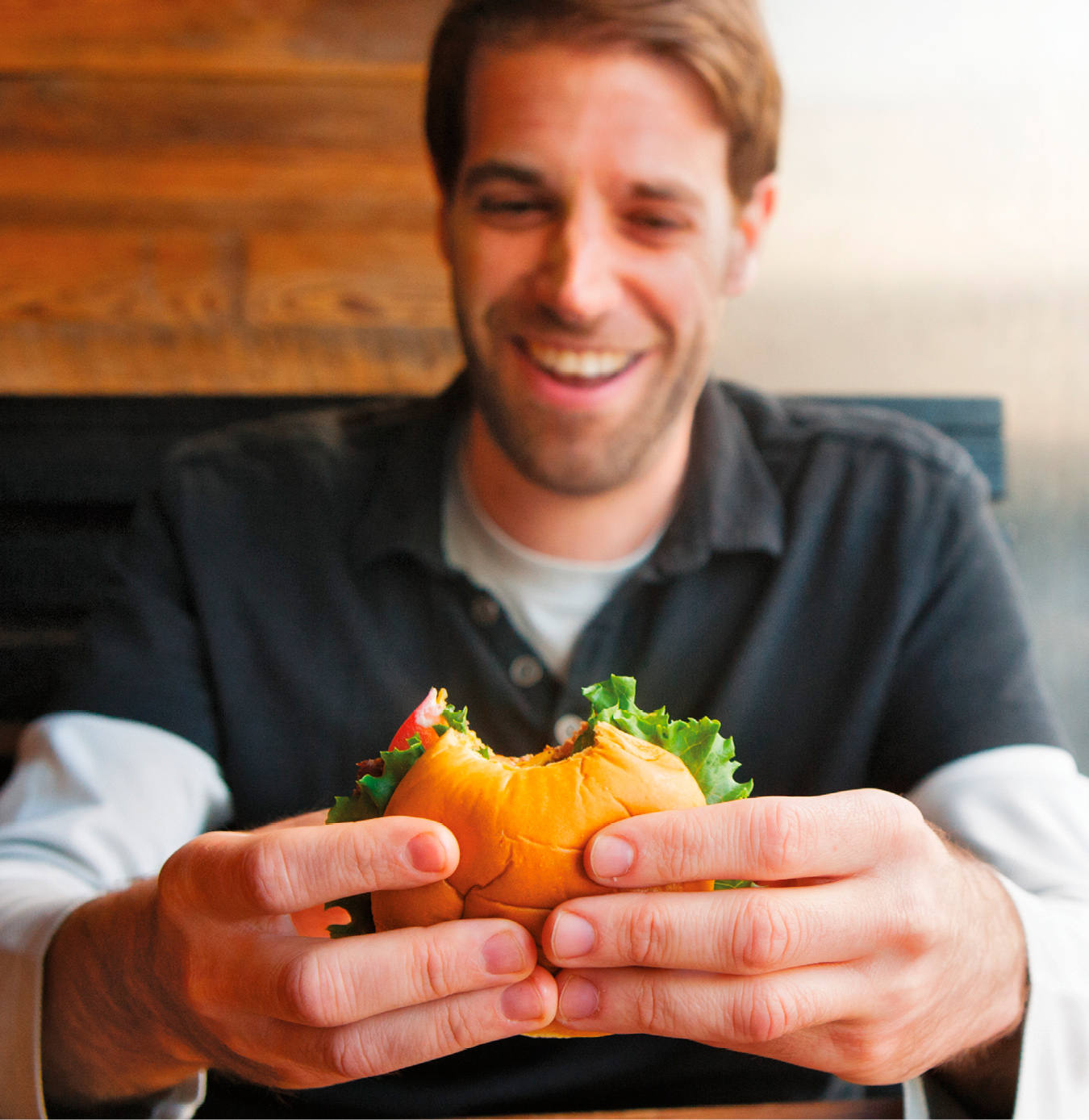
Cooking Bacon
MAKES 8 SLICES
Preheat the oven to 375°F. Lay 8 slices of bacon on a parchment paper–lined baking pan. Bake until the bacon is browned and crisp, about 15 minutes. Transfer the bacon to a paper towel–lined plate to drain. Break in half to top burgers.
Pro Tip: After it’s been cooked, Mark likes to dice the bacon into small pieces and sprinkle it on top of cheese fries and especially over cheese dogs—his favorite.

LOCAL HERO

MIDWEST, USA
As Mark Rosati says “the texture of Niman’s bacon is so soft and juicy. That, coupled with their cure and smoke levels, produces one of the most flavor bacons I’ve ever tasted, which, of course, highlights the quality of their amazing pork.”
Not by accident. Niman Ranch is an association of about 800 farmers, like Paul Willis, all from family-owned and operated farms, mostly in the Midwest. Niman is advised by the famed Dr. Temple Grandin, the animal expert whose sustainable practices have made Niman’s animal and land management protocols even more humane. Bacon is minimally processed with no artificial ingredients; it’s smoked four days over applewood, in a smokehouse that’s been in continuous production for over 100 years. We use Niman in our Shacks; substitute quality bacon such as D’Artagnan.

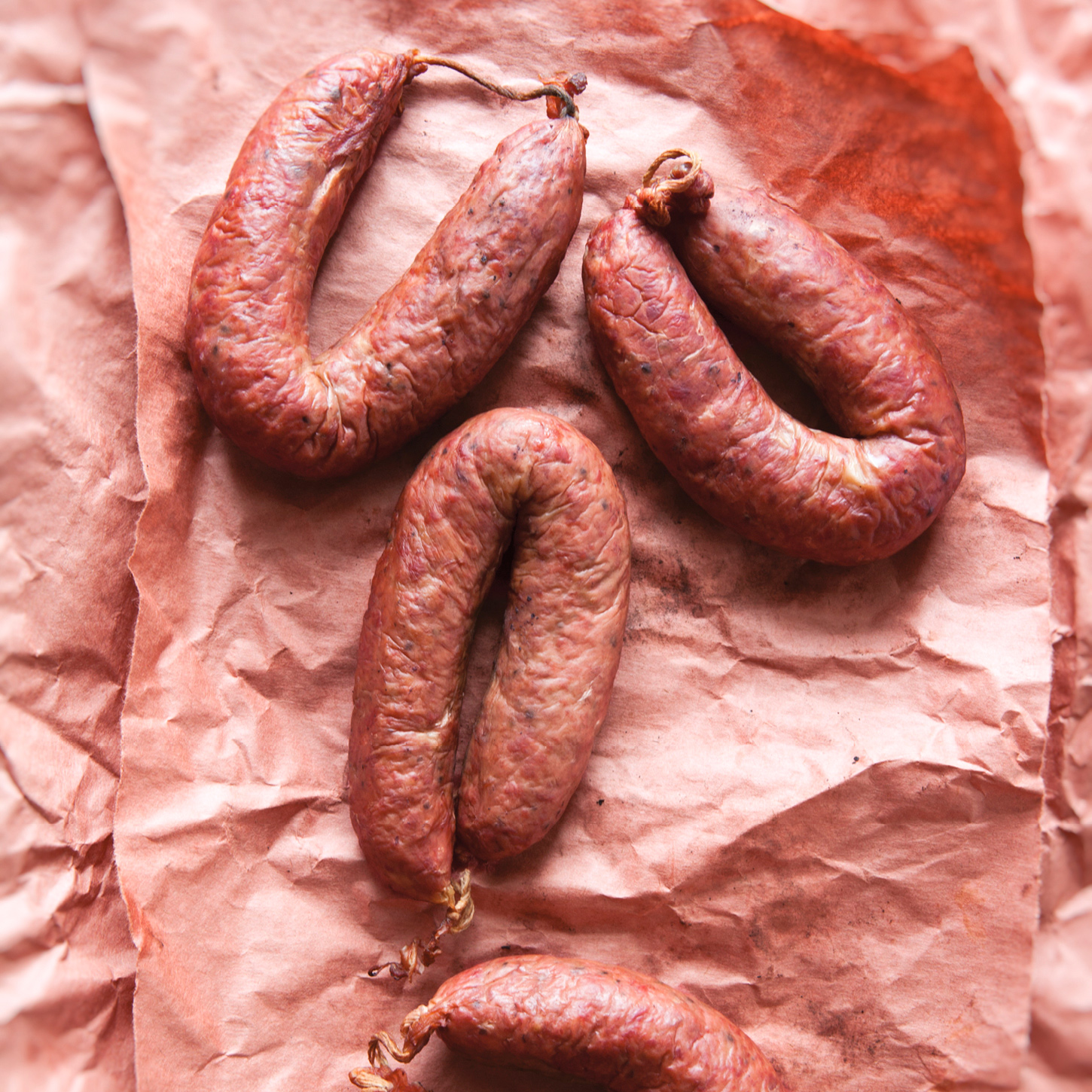
“We love hand crafting each Shack, infusing it with locally inspired flavors.”
—MARK ROSATI


MAKES 4
This burger was created for the opening of our first Austin Shack to celebrate everything that’s great about Texas barbecue, especially the smoked jalapeño cheese sausage made by Kreuz Market in Lockhart, Texas, an hour south. You can order the very same sausage at kreuzmarket.com or use your favorite smoked sausage links.
4hamburger potato buns, toasted (this page)
4tablespoons unsalted butter, melted
4tablespoons ShackSauce
8slices round kosher dill pickle
23-ounce smoked jalapeño cheese sausage links, halved lengthwise
1pound very cold ground beef, divided into 4 pucks
½teaspoon Our Salt & Pepper Mix
4slices American cheese
1. Follow the ShackBurger recipe, topping the burger with pickles and a griddled sausage (we love Kreuz Market’s) instead of lettuce and tomato.
2. For the sausages: Heat the griddle over medium heat until hot, 2 to 3 minutes. Put the sausages on the griddle cut side down and cook until golden brown and crisp, about 2 minutes. Flip the sausages and cook about 2 minutes more. We like to cook the sausages ahead and keep them warm in the oven while we make the burgers.

LOCAL HERO

LOCKHART, TX
The entire town of Lockhart, Texas, is redolent of the fragrant wood smoke that has given the place its livelihood ever since Charles Kreuz started smoking meats out of his grocery here in 1900. The jalapeño cheese sausages we serve in some of our Texas Shacks are pre-smoked for about two hours, then finished over Texas split post oak wood. As Emmylou Harris sings, “If I could only win your love…” Kreuz Market’s smokehouse turns out about 2,400 sausage rings a day: “85 percent beef, 15 percent pork, 100 percent truth,” spiced with black pepper, salt, and cayenne in natural casings. Texas Monthly calls Kreuz sausage “truly one of the best in Barbecueland.”
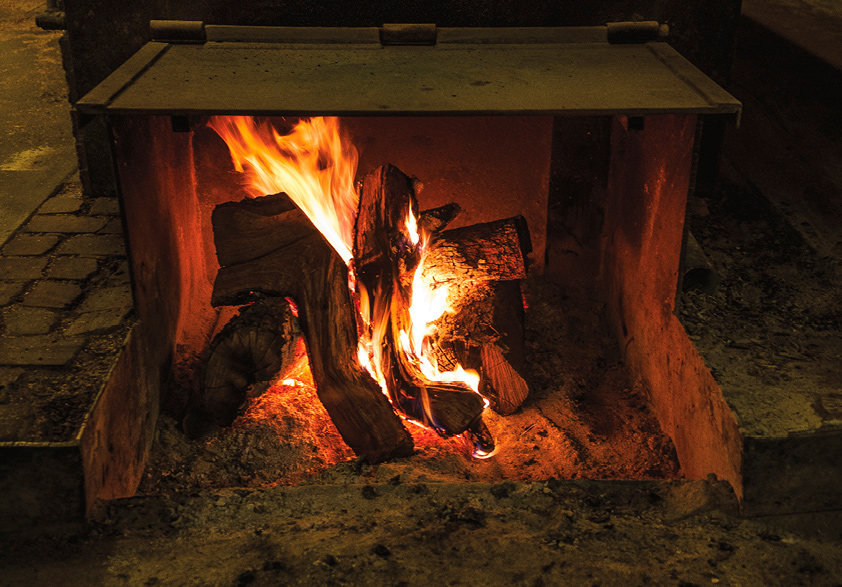
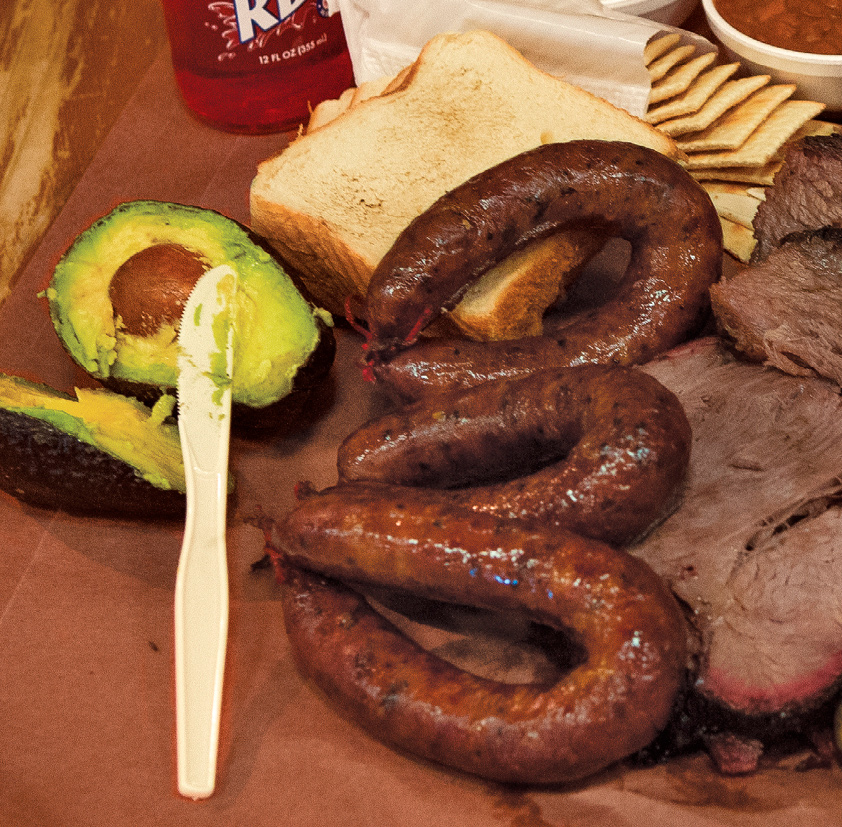


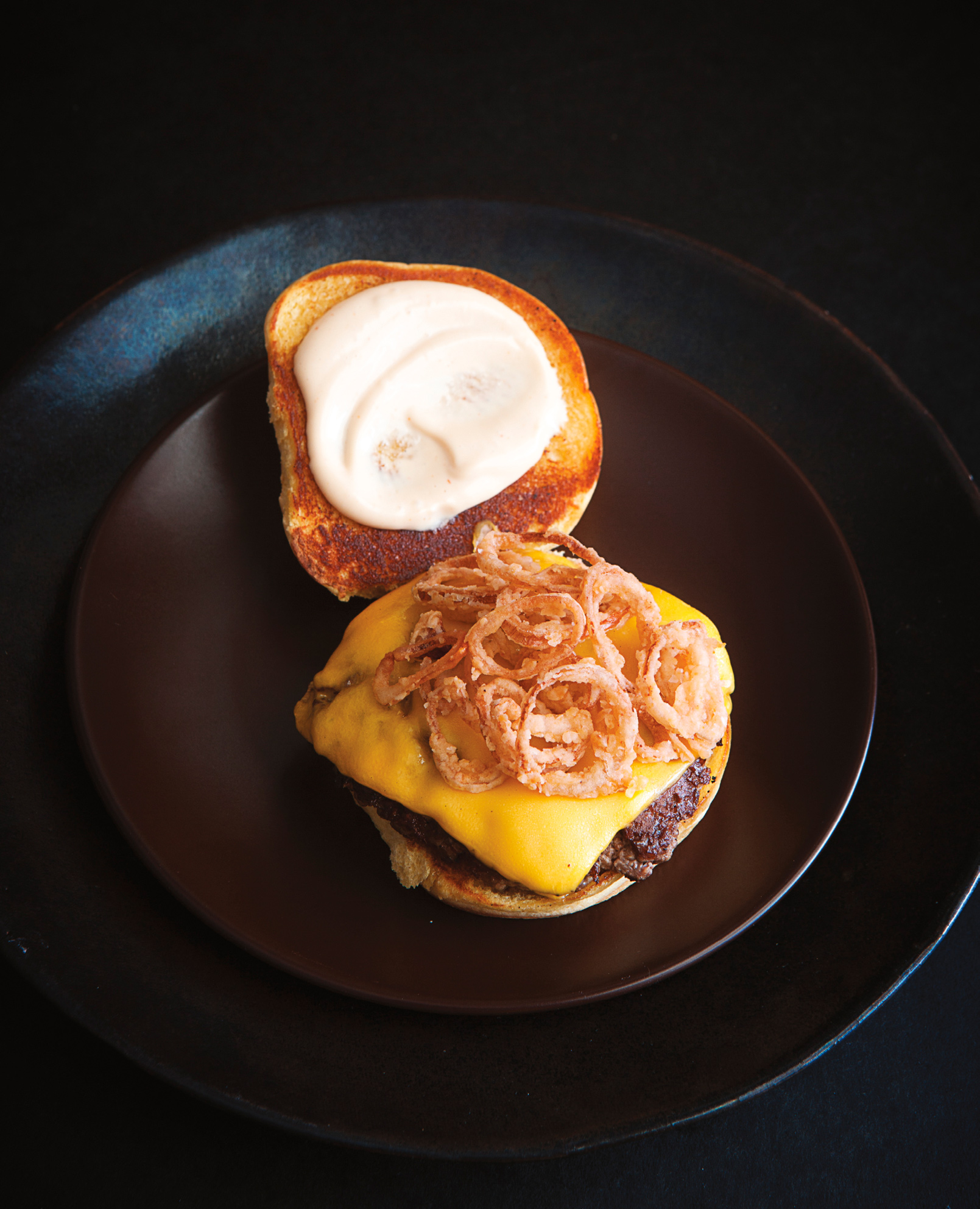
MAKES 4
Where do our burger ideas come from? This one was born to compete at the annual Burger Bash at the South Beach Wine & Food Festival in Miami. Not surprisingly, every one of us had an opinion. Ultimately, good old-fashioned comfort and simplicity triumphed. We went with our simplest burger. And we won!
4hamburger potato buns, toasted (this page)
4tablespoons unsalted butter, melted
4tablespoons ShackSauce
1pound very cold ground beef, divided into 4 pucks
½teaspoon Our Salt & Pepper Mix
4slices American cheese
4ounces ShackMeister Fried Shallots
Follow the ShackBurger recipe, topping the burger with the Fried Shallots instead of lettuce and tomato.

MAKES ABOUT 1½ CUPS
Okay, we’ll be honest: these fried shallots are our version of onion rings. We prefer the garlicky flavor of shallots, and because they’re smaller than onions, we can add more delicious crispy bits to our burgers and flat-top dogs! The marinade balances the shallots’ sweetness with the slightly bitter edge of beer. Making them is easier than you think.
½pound shallots, peeled and thinly sliced crosswise
1teaspoons freshly ground black pepper
1½cups ShackMeister or other ale
1½cups flour
Canola oil for frying
Salt
1. Put the shallots, ½ teaspoon of the pepper, and ale into a bowl. Cover and marinate in the refrigerator for at least 12 hours and up to 24 hours.
2. Mix together the remaining ½ teaspoon pepper with the flour in a wide deep dish. Strain the marinated shallots, discarding the marinade.
3. Pour the oil into a deep pot to a depth of 3 inches. Heat over medium heat until the oil reaches a temperature of 350°F on a candy thermometer. Meanwhile, working in batches, dredge the shallots in the seasoned flour until evenly coated. Transfer them to a sieve, and shake off excess flour.
4. Working in small batches, deep-fry the shallots in the hot oil, turning them halfway through, until golden and crisp, about 1½ minutes. Transfer them with a slotted spoon to drain on paper towels. Season with salt.
Making ShackMeister Fried Shallots
Fried onion rings have nothing on these crispy little beauties.
1. Slice peeled shallots crosswise and into thick rings.
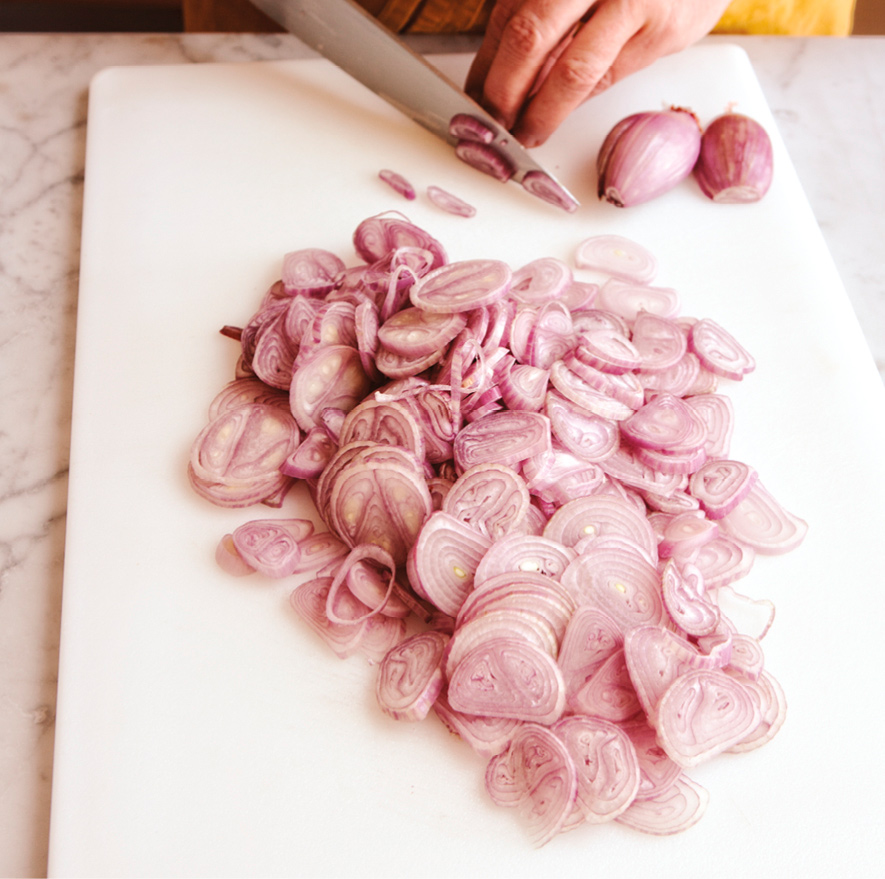
2. Marinate sliced shallots in ale and pepper for 12 to 24 hours, refrigerated.
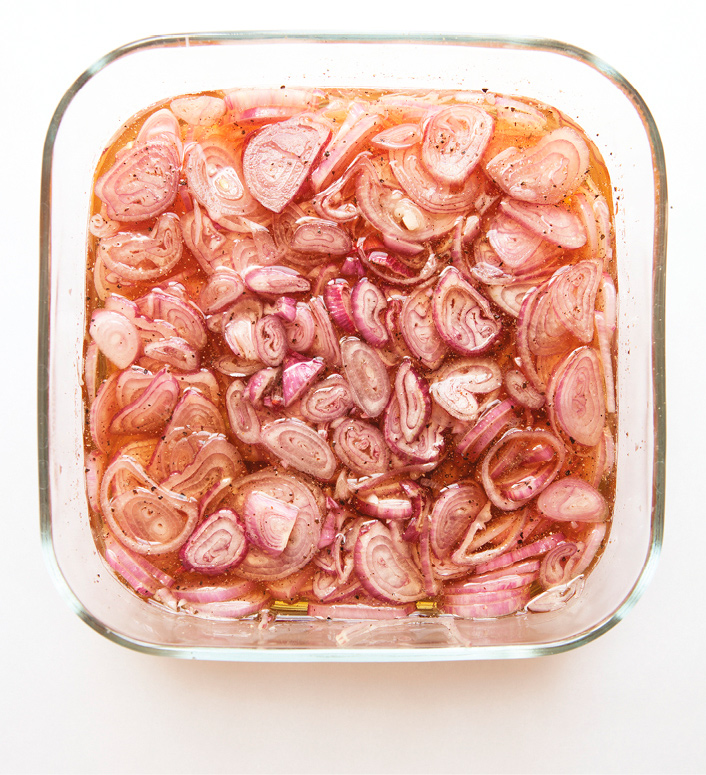
3. Dredge strained marinated shallots and mix well with flour.
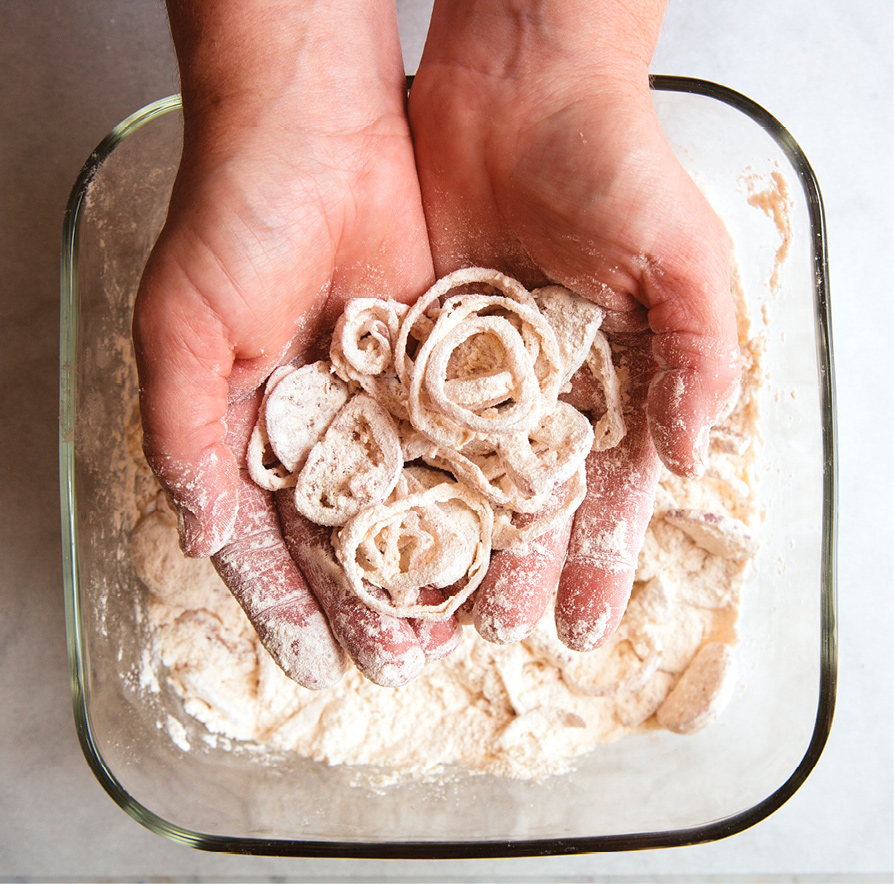
4. Shake off excess flour using a strainer.
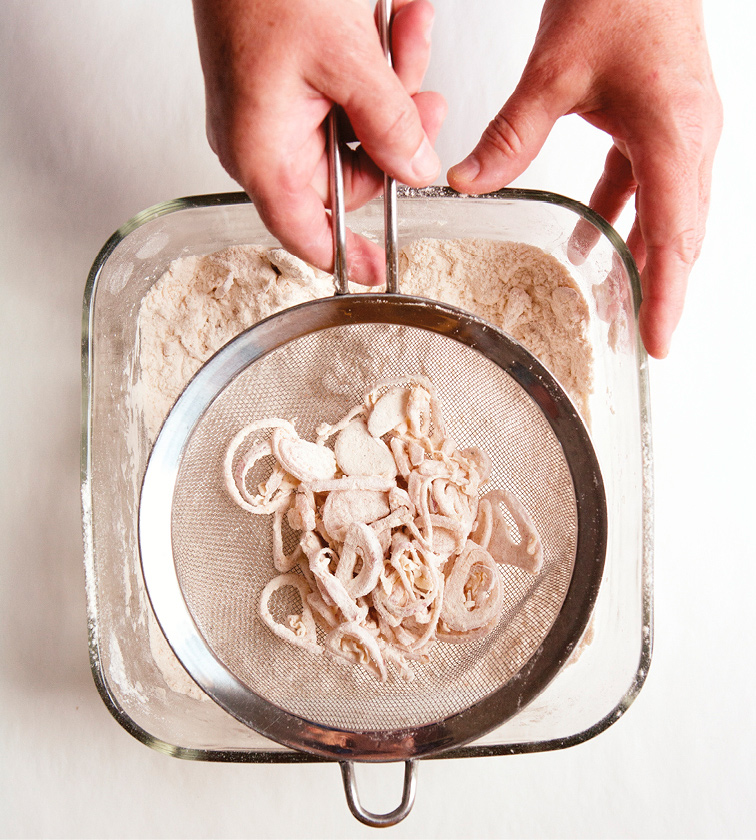
5. Fry shallots in batches in 3 inches of hot oil.
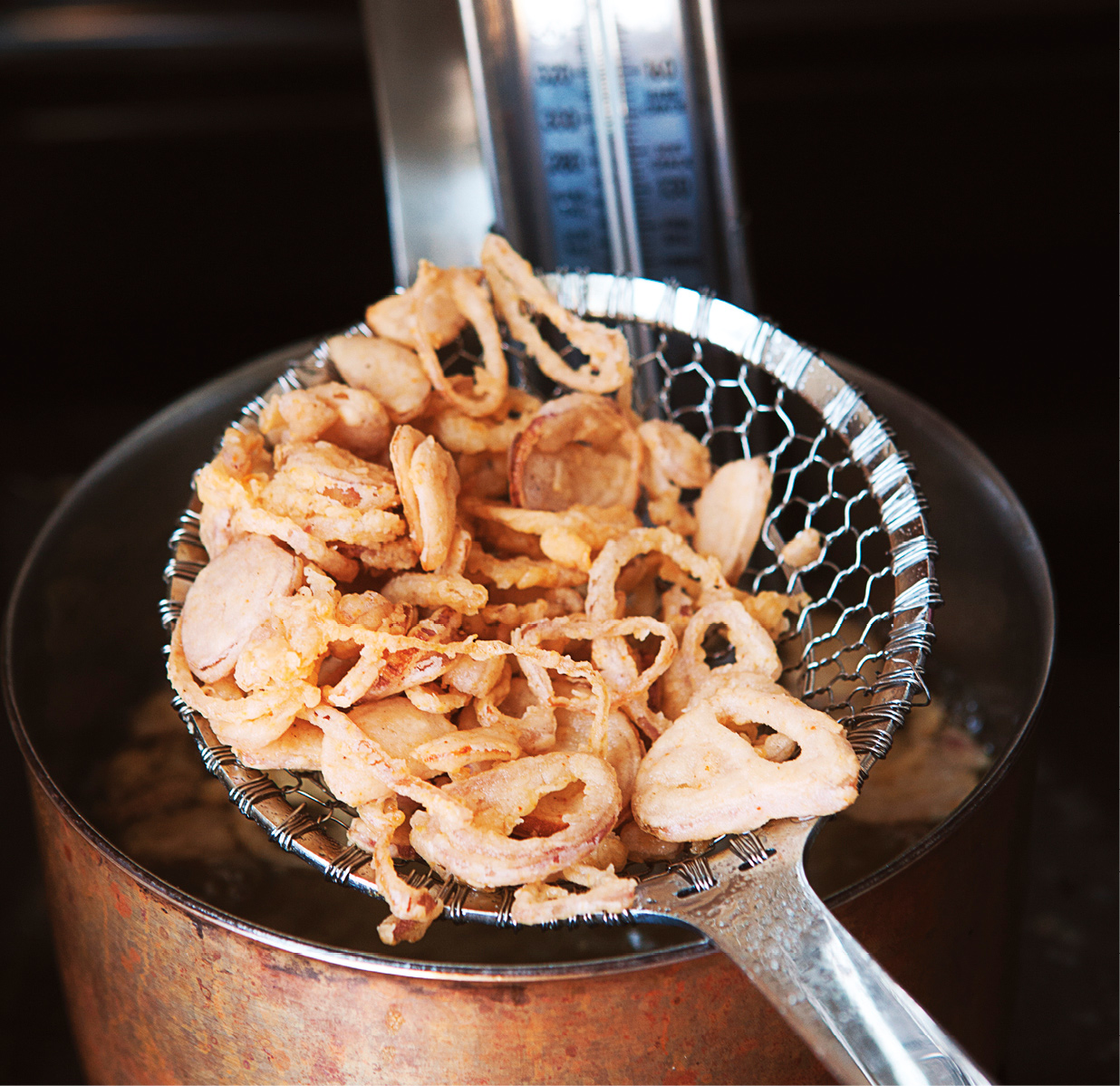
6. Drain fried shallots on paper towels and salt well.


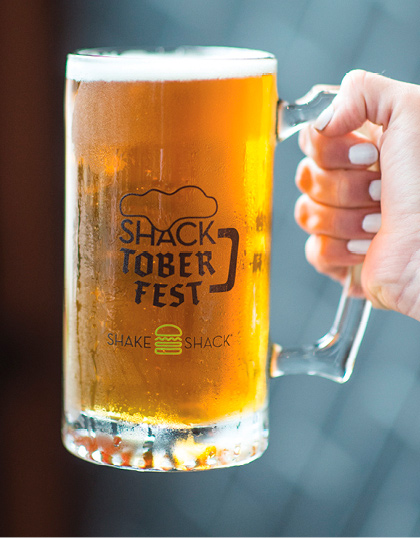
• ShackBurger with ShackMeister Ale. Burgers don’t run scared—they need a slight caramelized sweetness to enhance the char of the meat, ennoble the onions, and wake up the bun. Carbonation is a major ally of the ShackBurger; the “scrubbing bubbles” zap right through the cheese. Pale ales are best; their caramelized malts anchor the pairing while the hops slice through the middle.
• SmokeShack with Brown Ales. You’ll be surprised how well brown ales work with this burger. The toastiness of roasted malts really grabs on to the smokiness of the bacon.
• ’Shroom Burger with Belgian Ales. Belgian abbey ales, with their almost-raisiny caramelized flavor, are so good with the earthiness of the ’Shroom Burger. Or, try bourbon barrel-aged beers, particularly porters, with their rich vanilla-like American oakiness. Try “Berliner weisse,” or “sour beer,” a light, tart beer originally German, but American brewers make them now (and their slightly salty cousin, “Gose”).
—Garrett Oliver, Brooklyn Brewery

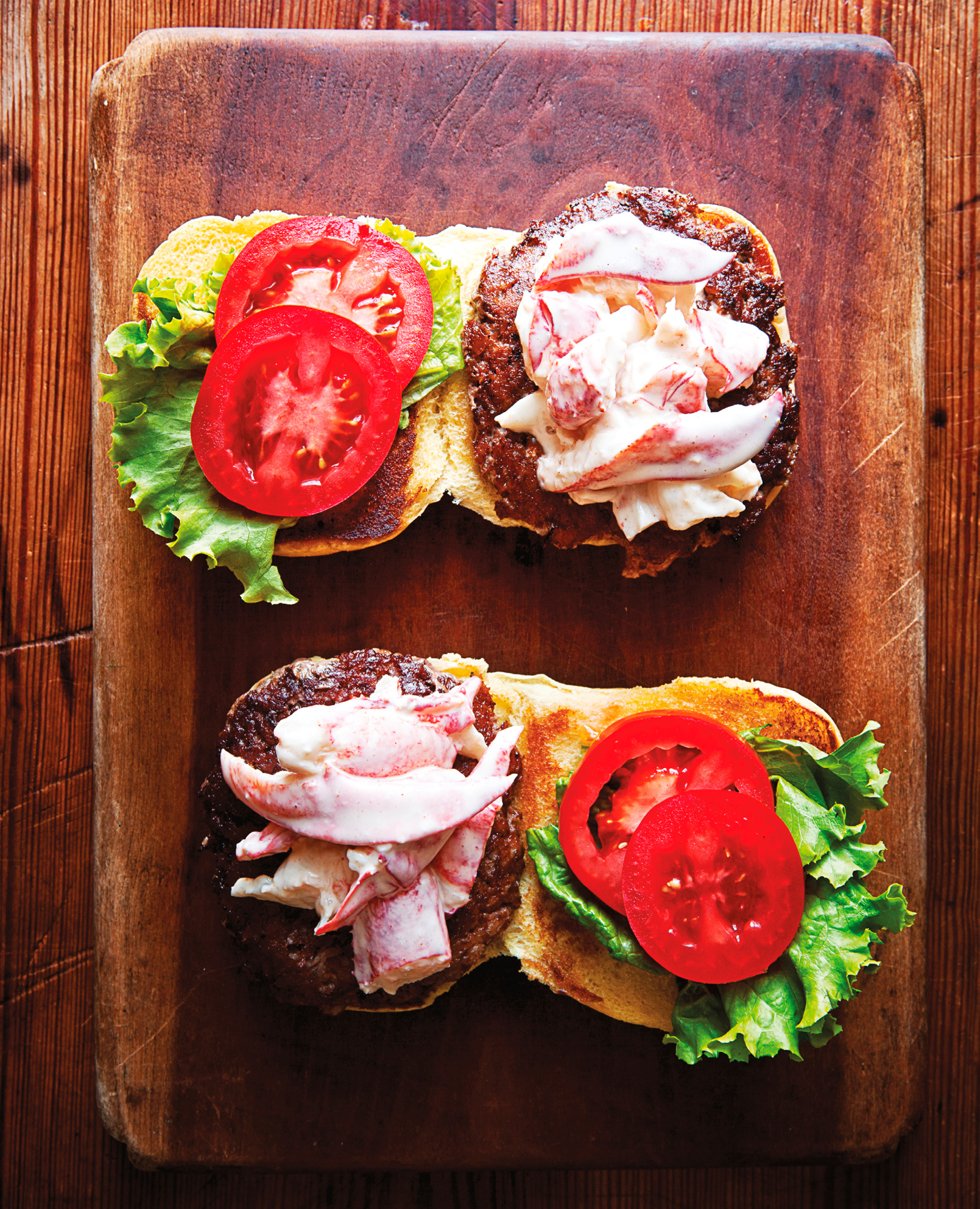
MAKES 4
Mark grew up in New England with lobster and clam shacks literally in his backyard. So a mashup of burger stands and seafood shacks seemed a natural: surf ’n’turf on a bun. ShackSauce, it turns out, works magic on lobster, too.
4hamburger potato buns, toasted (this page)
4tablespoons unsalted butter, melted
4pieces green leaf lettuce
8slices ripe plum tomato, sliced ¼ inch thick
1pound very cold ground beef, divided into 4 pucks
½teaspoon Our Salt & Pepper Mix
1recipe Shack Lobster Salad
Follow the ShackBurger recipe, hold the ShackSauce and cheese, and top that great burger with lobster salad.
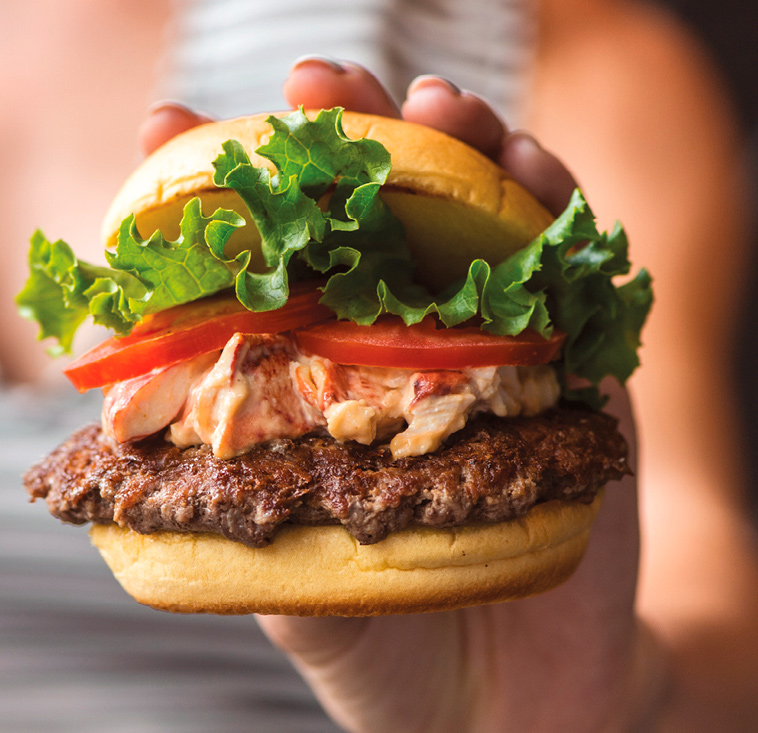

Now that’s quite a catch!

MAKES ABOUT 1½ CUPS
Steam your own lobsters, if you like, or buy them freshly cooked at a good seafood market.
21-pound lobsters, steamed, cooled, meat removed from shell and cut into ½-inch pieces
6tablespoons ShackSauce or Hellmann’s mayonnaise
2teaspoons fresh lemon juice
¼teaspoon celery salt
Salt and pepper
Put lobster meat, ShackSauce, lemon juice, and celery salt into a mixing bowl and gently stir to combine. Season with salt and pepper. Keep cold until ready to serve.


MAKES 4
We created this burger for the opening of our first Shack in Los Angeles (America’s burger capitol!) to salute the city’s culinary traditions. We loved the region’s iconic French Dip where rich au jus enhances the flavor of the beef. Our Bacon and Beer–Simmered Onions add that richness and then some—especially to a double cheeseburger.
4hamburger potato buns, toasted (this page)
4tablespoons unsalted butter, melted
8teaspoons Dijon mustard
2pounds very cold ground beef, divided into 8 pucks
1teaspoon Our Salt & Pepper Mix
8slices Swiss cheese
1recipe Bacon and Beer–Simmered Onions, warm
Follow the ShackBurger recipe, spooning mustard instead of ShackSauce onto the top bun and stacking two cheeseburgers on each bun. Top with a generous helping of Bacon and Beer–Simmered Onions instead of lettuce and tomato.

MAKES 1 CUP
Mark was inspired by the old-fashioned griddled onion toppings at roadside burger stands, but he picked up a few modern touches from the British chef Heston Blumenthal, who likes to add star anise to onions for extra richness.
1teaspoon canola oil
4slices bacon, cut crosswise into ¼-inch-thick pieces
2medium onions, peeled, halved lengthwise, and sliced ½ inch thick
1tablespoon unsalted butter, diced
½teaspoon kosher salt
½cup ale
1teaspoon balsamic vinegar
½bay leaf
½star anise
1. Put the oil and bacon in a medium saucepan and cook over medium heat, stirring often, until the bacon is golden brown and crisp, about 5 minutes. Add the onions, butter, and salt and stir until the onions are evenly coated.
2. Cover the pan and cook, stirring often, until the onions are soft and translucent, about 20 minutes.
3. Add the ale, vinegar, bay leaf, and star anise. Cook, uncovered, stirring frequently, until the liquid has almost evaporated and the onions are very soft and caramelized, about 40 minutes. Remove and discard the bay leaf and star anise.

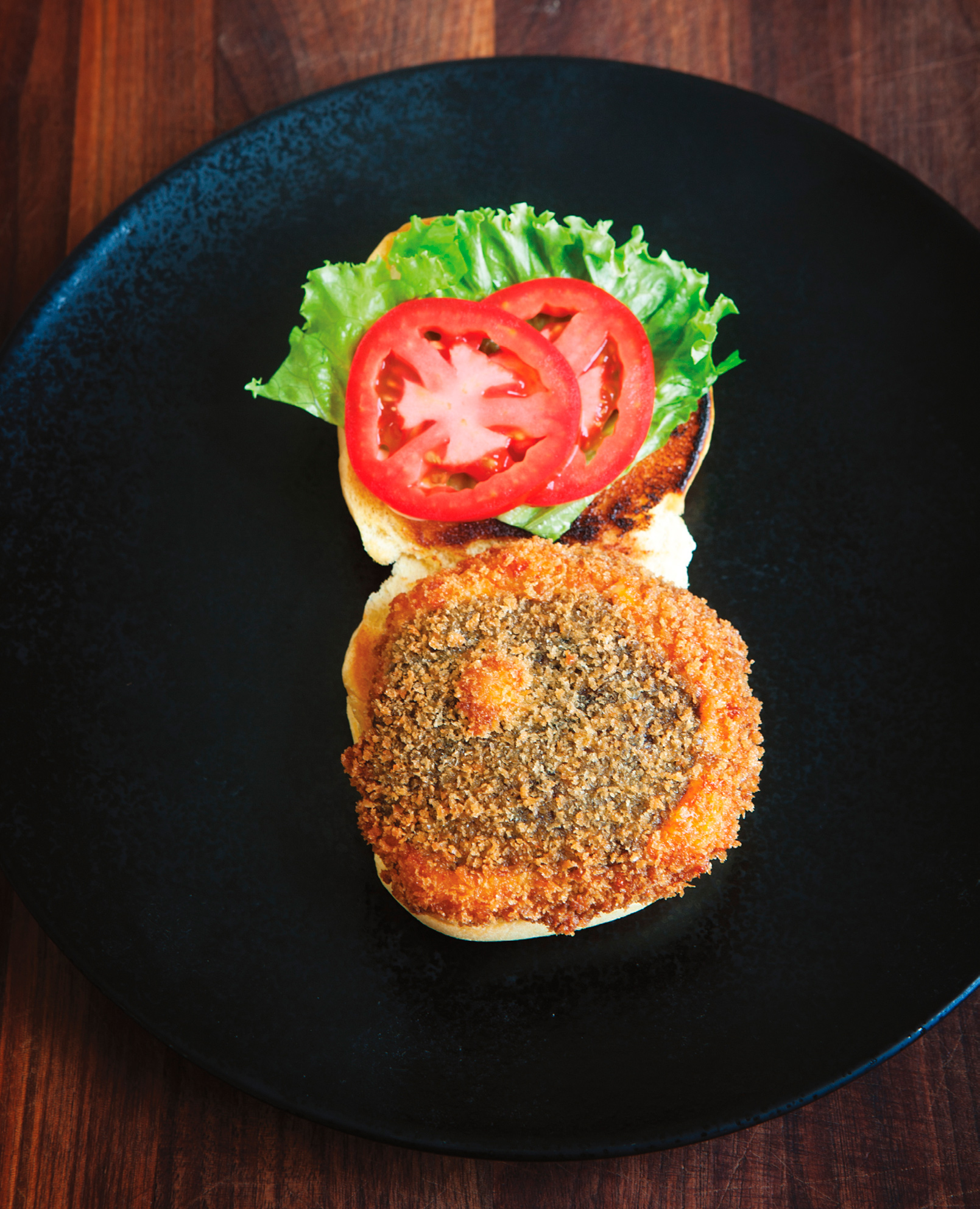
MAKES 4
We knew that our idea of a community gathering place meant we wanted to offer our vegetarian guests more than just fries to munch on. We set out to create a vegetarian experience even meat eaters would crave. Hence the ’Shroom Burger’s crispy mushroom halves surrounding a creamy, cheesy filling. After it became so popular, we created the Shack Stack, piling a ’Shroom Burger atop a ShackBurger, so our meat-loving friends can get in on the ’Shroom action.
For the mushroom caps:
4 4-inch portabello mushroom caps
¼cup canola oil
½teaspoon kosher salt
⅛teaspoon freshly ground black pepper
1½cups flour
3eggs
2cups panko bread crumbs
For the filling:
1½cups grated muenster
½cup grated cheddar
½teaspoon minced onion
⅛teaspoon minced garlic
¼teaspoon flour
1egg yolk
1pinch cayenne
To cook and assemble the mushroom burgers:
Canola oil for deep-frying
Kosher salt
4tablespoons ShackSauce
4hamburger potato buns, toasted (this page)
4pieces green leaf lettuce
8¼-inch slices ripe plum tomato
1. For the mushroom caps, preheat the oven to 375°F. Put mushroom caps on a medium baking pan. Rub caps all over with the oil, then season both sides with the salt and pepper. Arrange mushrooms gill side down in a single layer and roast until tender, 30 to 35 minutes. Remove from the oven and set aside to cool. Slice mushrooms in half horizontally.
2. Put the flour in a wide dish, beat the eggs in another wide dish, and put the panko in a third wide dish and set aside.
3. For the filling, mix together the muenster and cheddar cheeses, onion, garlic, flour, egg yolk, and cayenne in a medium mixing bowl. Set aside.
4. Shape the filling into 4 equal disks, ½ inch smaller in diameter than the mushroom caps. Place cheese disks on gill side of each mushroom cap, cover with other half of cap, cut side down, and gently press together to secure the filling.
5. Dredge the stuffed mushroom caps in the flour, then dip in the beaten egg, coating them completely, then dredge in the panko. Set prepared mushrooms on a plate and refrigerate while heating the oil to deep-fry them.
6. To cook the mushroom burgers, pour the oil into a deep, wide pot to a depth of 3 inches. Heat over medium heat until the oil reaches a temperature of 350°F on a candy thermometer. Deep-fry the prepared mushrooms, one or two at a time, until golden brown and crisp all over, about 3 or 4 minutes. Transfer mushrooms with a slotted spoon to drain on paper towels. Season with salt.
7. Spoon the ShackSauce onto the top bun. Add a piece of lettuce and two slices of tomato.
8. Transfer the mushroom burgers to the prepared buns. Enjoy!
Making the ’Shroom Burger
Nice to know the secrets, even if you’d rather have yours at a Shack!
1. Roast portabello mushroom caps rubbed with oil at 375°F for 30 minutes.

2. Slice mushroom caps in half horizontally.
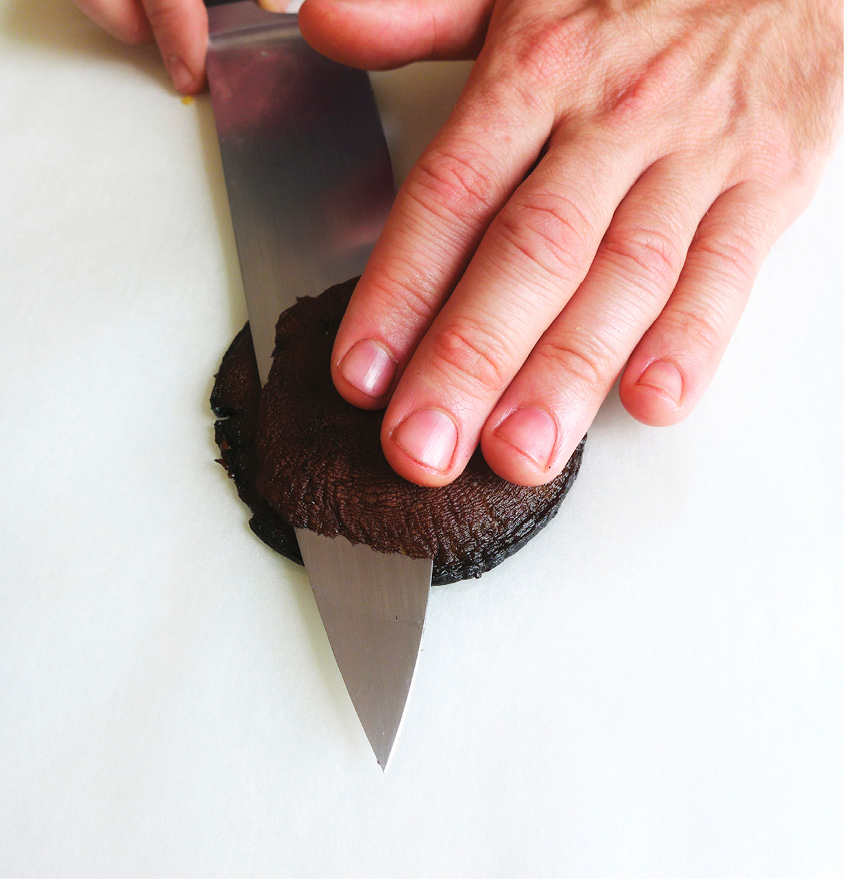
3. Separate the two halves of the mushroom caps.
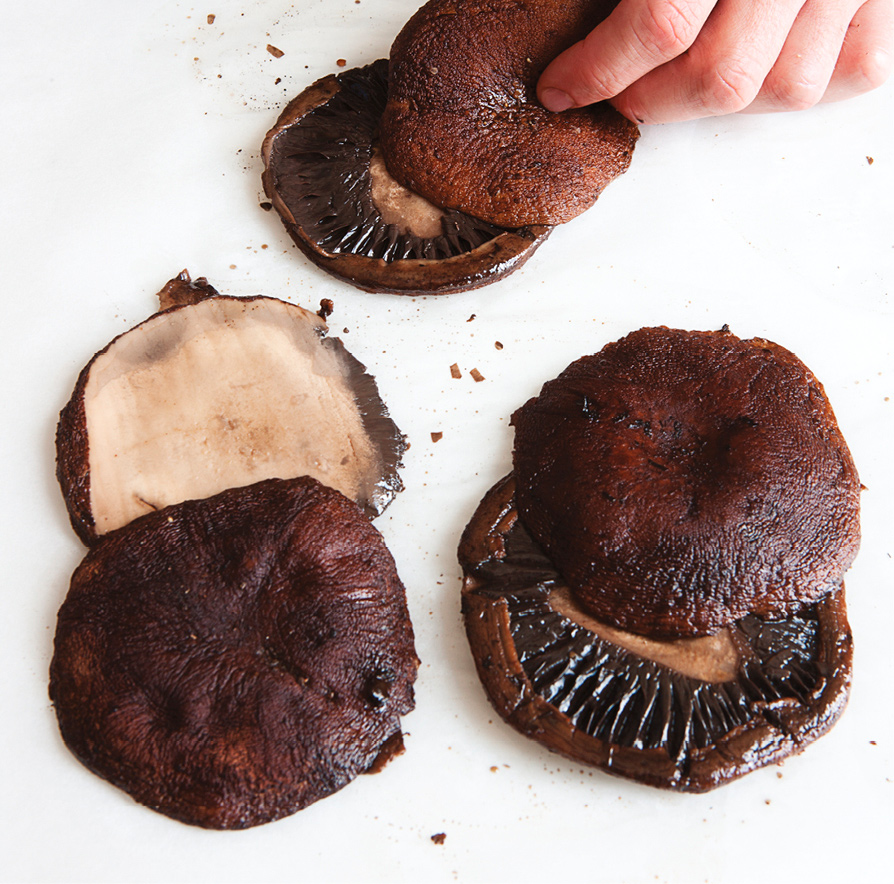
4. Fill the bottom of the cap with cheese stuffing shaped into a small disk.

5. Coat the stuffed mushrooms with flour, egg, and panko.

6. Fry stuffed mushrooms one or two at a time in the hot oil.

LOCAL HERO

GONZALES, LA
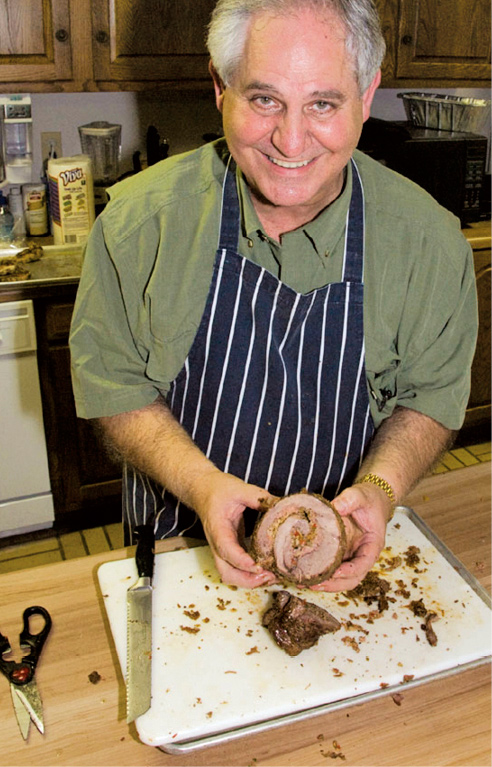
Chef John Folse is famous in Louisiana for his culinary institute, his restaurants, and his weighty cookbooks. But it was his food preparation facilities that became crucial to Shake Shack. Right after 9/11, Folse decided to “adopt” a New York restaurant and chose Eleven Madison Park to lavish weekly Cajun Care Packages of music and food. “I don’t think anyone even knew who Chef John Folse was,” he recalls. “They came to realize we were just chefs in Louisiana thinking about them. We did what people do to help.” After Jeff Amoscato read about Folse’s processing facilities, he reached out: “To find one supplier with the ability to make so many different items is rare. Then we connected the dots back to USHG in 2001.” Folse likes his version: “The fact that I’m now producing ’Shroom Burgers and ShackSauce didn’t happen because I'm a great manufacturer, it happened because we fed a bunch of restaurant folks after 9/11.”

We knew we needed an iconic breakfast sandwich that would deliver an experience as memorable as the ShackBurger. It had to be simple, high quality, and delicious. Now, in select Shacks, we offer breakfast three ways: Egg ’N Cheese, Bacon Egg ’N Cheese, and Sausage Egg ’N Cheese.

MAKES 4
4hamburger potato buns, toasted (this page)
2teaspoons butter
4large eggs
½teaspoon Our Salt & Pepper Mix
4slices American cheese
1. Heat the butter in a large nonstick skillet over medium-low heat. Crack the eggs into the skillet, add a pinch of Our Salt & Pepper Mix, and fry until the whites are opaque and the yolks are beginning to set, 3 to 4 minutes. Gently flip the eggs. Put the cheese on top and fry the eggs until the yolks are no longer runny, 2 to 3 minutes.
2. Transfer each egg to the toasted bun and enjoy.
For the Bacon Egg ’N Cheese: To the Egg ’N Cheese, add 8 slices double-smoked bacon (this page), broken in half, and top each sandwich with 4 half slices.
For the Sausage Egg ’N Cheese: To the Egg ’N Cheese, add breakfast sausage patties or great, freshly made breakfast sausage.
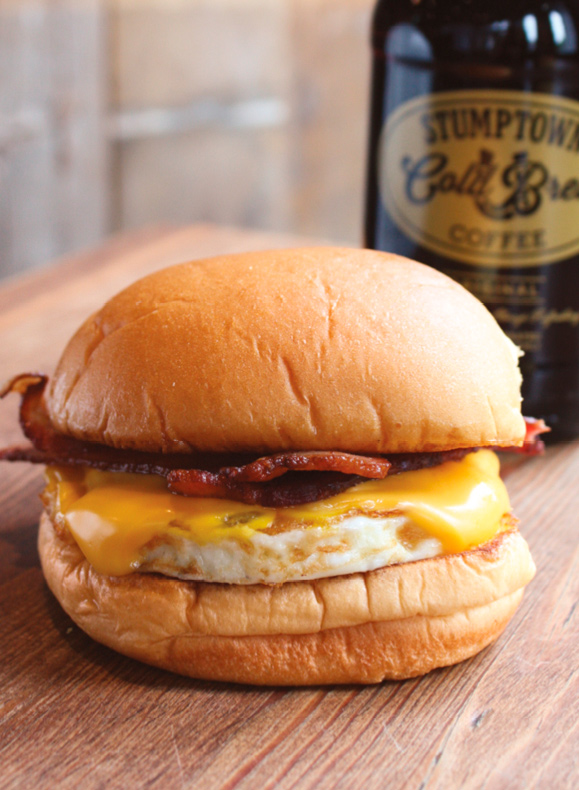

MAKES 4 4-INCH PATTIES
1small clove garlic, peeled and finely minced
½teaspoon finely chopped fresh sage
1tablespoon maple sugar
1½teaspoons kosher salt
½teaspoon Aleppo pepper flakes
2pinches freshly ground black pepper
1pound ground pork
1. Mix together the seasonings and spices in a medium mixing bowl. Add the pork and gently mix until evenly combined. Cover and refrigerate for at least 2 hours and up to 3 days.
2. When you’re ready to cook, gently form the sausage mixture into 4-inch patties.
3. Heat a cast-iron griddle over medium heat until hot, 2 to 3 minutes. Cook the sausage patties until browned and crisp, about 2 minutes. Flip the patties and cook until the second side is well browned, another 2 minutes. Transfer sausage patties to a plate and keep warm.
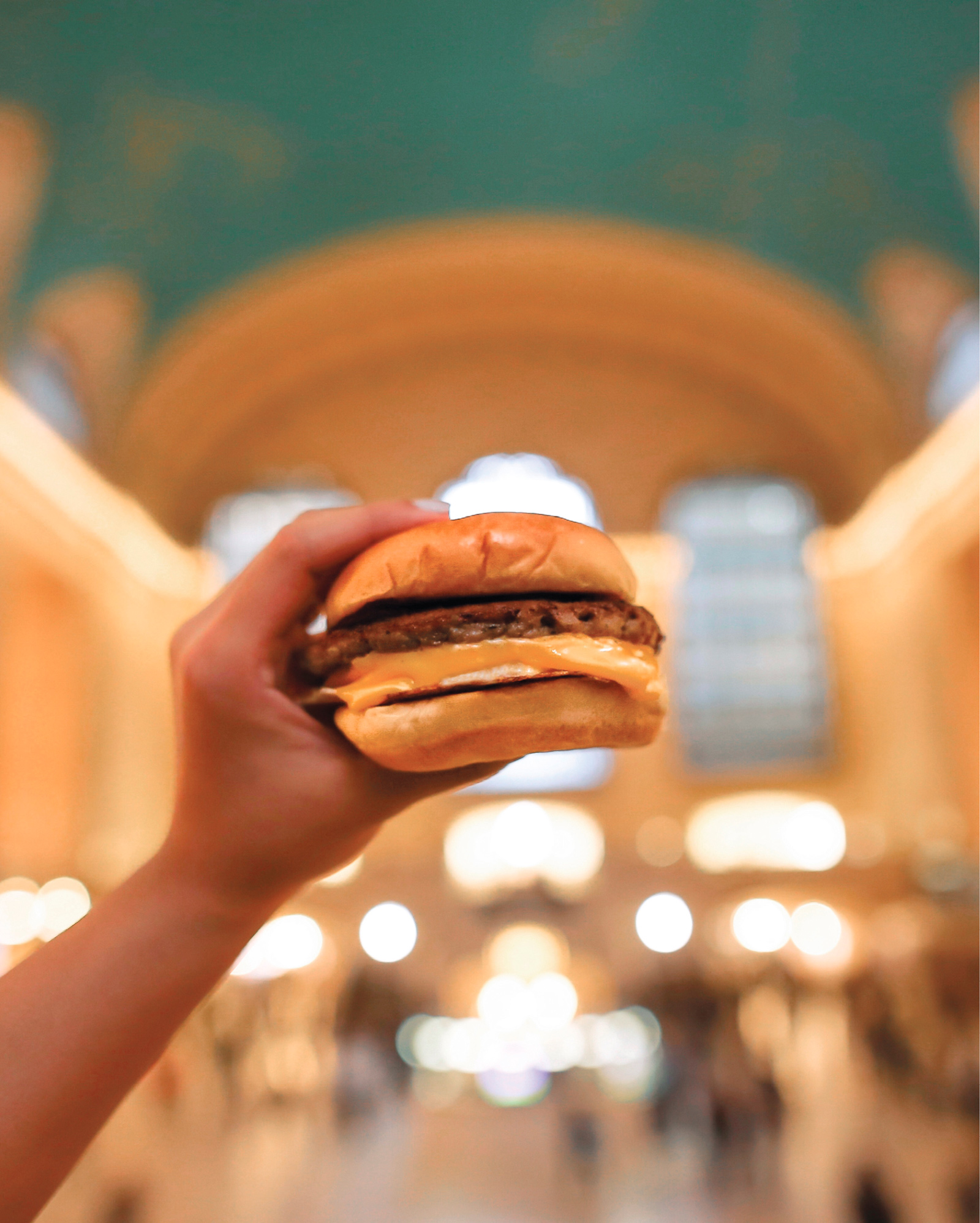
Notes from the Shack Chef
Mark Rosati’s food finesse echoes around the block and around the world.
Even though culinary director Mark Rosati had come to New York to study film in 2002, he found himself talking his way into Tom Colicchio’s kitchen at USHG’s Gramercy Tavern. “I’d met Tom at a food festival and peppered him with endless questions about how he braised his legendary short ribs. ‘Either you’re insane, or you’re really curious about cooking,’ he said, inviting me to trail in his kitchen. I was so clueless about what a trail was, I showed up in a suit and tie!
“I absolutely loved the feel and energy of the kitchen, how the meat roaster used butter and crushed garlic to baste a sirloin steak. I was hooked. I wanted to learn this and all that came with it. I wanted burns and scars. I said ‘I’ll happily wash your stove, cut your carrots, finely slice your chives, whatever you need.’ Deveining foie gras, pushing bone marrow—as I touched these ingredients, the fever grew. I worked two months for free. ‘We can’t get rid of you,’ they said and hired me as a line cook. In 2006, when the new chef, Michael Anthony, arrived, I was further humbled mastering his all-American, vegetable-centric cooking. Then I thought: Since I love restaurants, I need to learn the front of the house.

Left: Upper West Side Shack today. Right: Randy and Danny flank early Shack leader David Swinghamer.
“In 2007, the only opening for a manager at USHG was Shake Shack. I was grossly underqualified, and ambivalent about Shake Shack to be honest. I was offered a trail at the Madison Square Park Shack, and saw the quality of their ingredients, how everything was made fresh daily. I saw how their passion for cooking was like a fine dining restaurant’s: you don’t buy the sauces or the pastry mix-ins, you make them! I saw how jazzed the staff was. It was not ‘How’re we going to meet budget goals?’ but ‘How’re we going to cook for 2,000 people, have fun, and make everyone happy today?’ Randy, that great cheerleader, convinced them to hire me.
“I’d been offered a job as a server at Per Se, and when I called to turn it down for Shake Shack, the person in charge of hiring said: ‘I don’t blame you. You’ll learn management and hospitality from the best. I’d do it too!’ As kitchen manager at MSP, I focused on my culinary strengths: ‘Let’s sauté those onions longer to build flavor before adding the cream for the cheese sauce.’
“A year later, I helped open the second Shack on the Upper West Side. That was Randy’s baby. I couldn’t have been more excited. In my mind, I was not opening another Shake Shack, I was opening another Danny Meyer restaurant. It was a huge learning experience: We tore that restaurant down and rebuilt it numerous times, obsessing over lighting, signage, kitchen flow. The night before we opened, Danny comes in and says, ‘Beautiful. But the kitchen is way too bright. I wish the drop down above the counter was a little lower so guests could see the beautiful dining room before the kitchen.’ So we call the construction guys in to work all night in our beautiful, clean restaurant. Danny was right, as always. We worked long days, barely sleeping, then talked into the night about how to work more efficiently. I was living on the bun station; Randy was living on expediting. Planning openings at Citi Field and Miami Beach, Randy asked me to focus on crafting new and locally inspired menus.”
Fast forward: Today Mark can be as easily found in Minneapolis as London, Tokyo, or the Middle East, making the connection with food and culture. “I’ll go to Seoul to meet food people. I know we want to deliver on what they fell in love with at MSP, but we want to reach out into their culture, too, and find local flavors that celebrate where we are.”

Mark in his element.
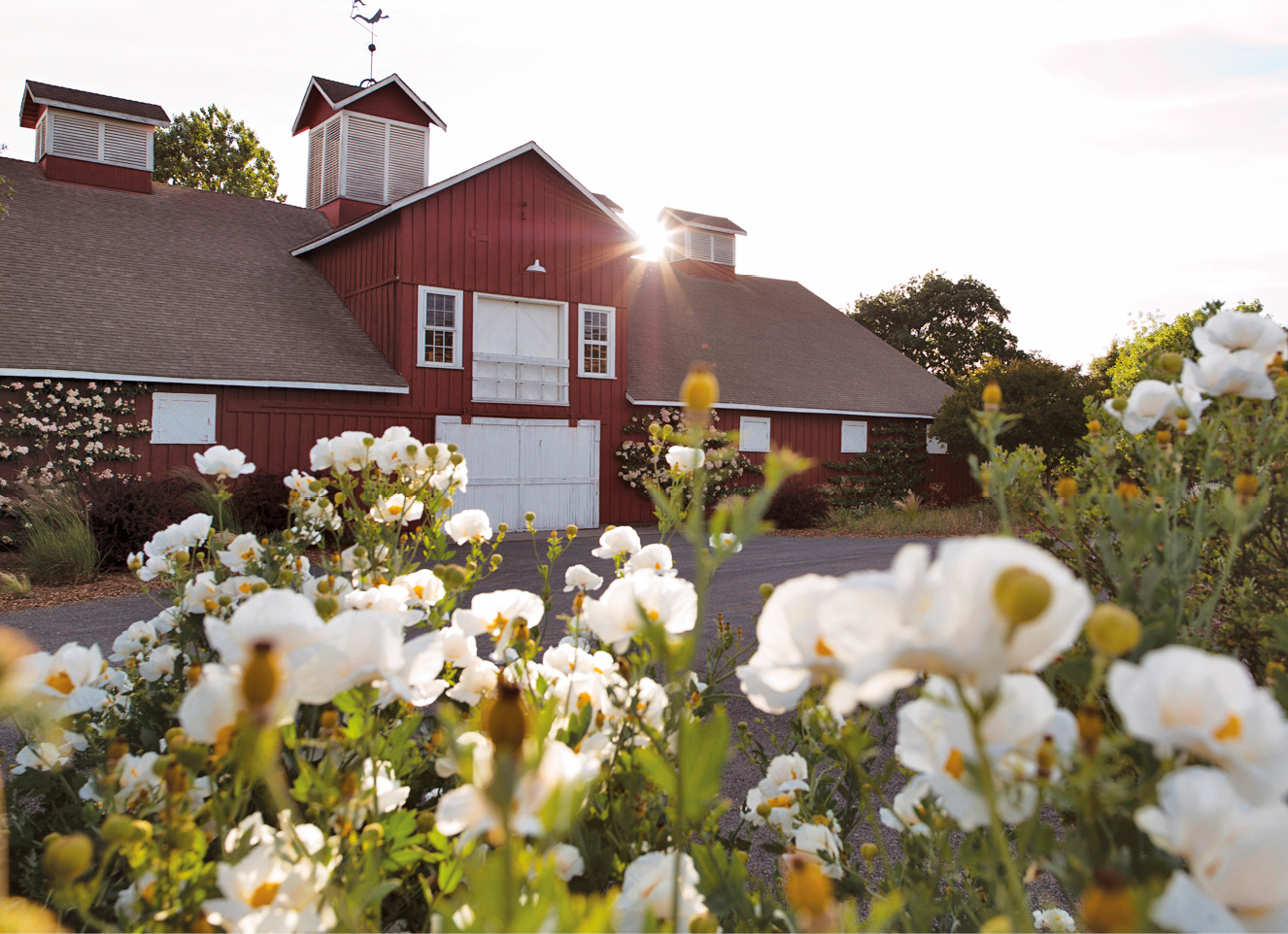
LOCAL HERO

RUTHERFORD, CA
This was one of Shake Shack’s first relationships with growers and producers. Not surprisingly, the Frog’s Leap partnership originated with Danny Meyer and the values he shared with owner and winemaker John Williams. Frog’s Leap was an early pioneer in dry-farming, making wine with organically grown grapes, caring for the well-being of its workers as well as the soil.
In 2007, with Randy and Frog’s Leap’s general manager, Jonah Beer, the relationship was cemented. As Beer tells the story, “They wanted us to make a wine that would fit with Shake Shack’s culture, food, and experience. It’s quite a jump from thinking alike to making something together.
“If they knew how fast they would grow, they didn’t tell us! Shake Shack was very upfront about letting Frog’s Leap be the winemaking experts. The custom reds and whites we make exclusively for Shake Shack are fruit forward, with a bright acidity that enlivens their food.” Together we created what became Shack Red and Shack White.



Jonah Beer of Frog’s Leap Winery pairs our favorites with his favorites.
• ShackBurger with Cabernet Sauvignon. When I’m about to tuck into the classic ShackBurger, the fattiness of the beef, the melted cheese, the soft, sweet, potato bun just cry out for a bold Cab. Our custom Shack Red (Cab’s a critical component) with its ripe, black fruit flavors (think cassis and currant) beautifully sets off that burger.
• SmokeShack with Zinfandel. We need even more fruit to balance the flavors of the Smoke Shack’s crisp, salty bacon and slightly sweet cherry peppers. I’d opt for the wild berry razz-ma-tazz of Zinfandel. Its clean fruit flavors play nicely off the smoke and peppers.
• Peanut Butter Bacon Burger with Shack White. I’d pair our Sauvignon blanc–based Shack White with this bad boy. The peanut butter brings more salty, creamy goodness to the smoky, salty bacon and pulls out the nuttiness of the burger itself. You need a wine with bright (read: racy) acid. Our Shack White is based on Sauvignon Blanc, a wine defined by and cherished for its acid. With crisp, apple- and pear-like flavors, Shack White works especially well because of the peanut butter…like dragging an apple slice through an open jar of PB.
• ’Shroom Burger with Merlot. With that portobello’s savory umami, I’d choose a well-aged red, say 10–15 years. With time in the bottle, reds like Merlot move toward a balanced flavor profile of fruit, earth, and “sous bois,” which means forest floor. Those hints of truffle, porcini, and soy in the wine just enhance the burger’s richness.
• Hamburger with Abita Draft Root Beer. What about those little rug rats you have in tow? Well, this ain’t France, so we’re not giving them wine! But, that doesn’t mean the kids should be left out! When Junior orders a hamburger, suggest he pair it with Abita Draft Root Beer. Hell, pour it in the GoVino wineglass so he can swirl and sip it like the grown-ups! The root beer’s loaded with spice and sassafras flavors that highlight the burger’s simple goodness. The bubbly, bright fizz tames the sweet, potato bun.
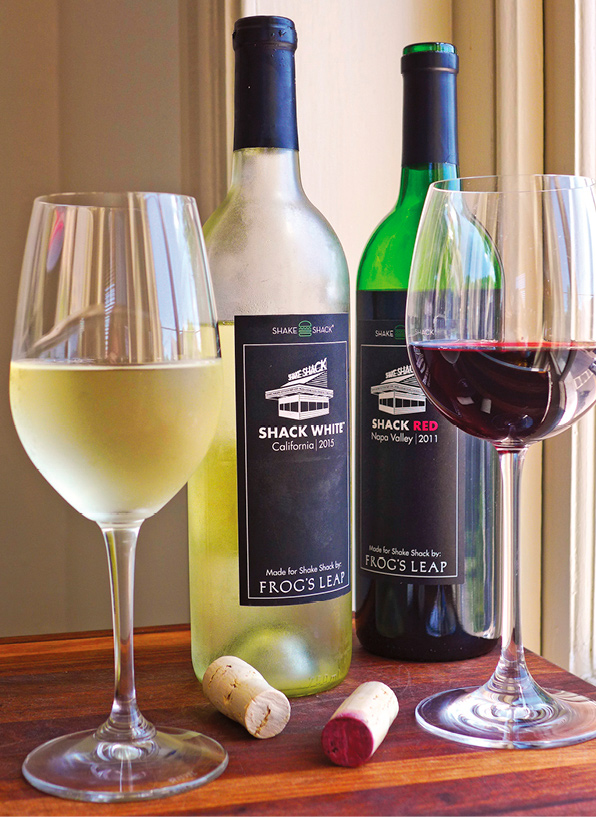

“We never forget our culinary heritage, so we love teaming up with the world’s greatest chefs.”
—RANDY GARUTTI
Because Shake Shack was born from a fine dining sensibility, it seems natural for us to reach our to some of our chef friends and others we’ve long admired to cook up imaginative limited-time treats. We try to capture each chef’s unique style and personality within the context of the Shack, and to surprise and delight our mutual fans. Besides the stellar examples here and throughout the book, we’ve collaborated with Ford Fry in Atlanta, Lee Wolen of BOKA in Chicago, Marc Vetri in Philadelphia, Sat Bains of his Restaurant Sat Bains in Nottingham, UK, and Zaiyu Hasegawa of DEN restaurant in Tokyo and so many others.
Mark carries this quote, attributed to Eleanor Roosevelt, on his phone: “The greatest pursuit of an artist is collaboration. Especially drunken collaboration with friends.”

Clockwise from above left: Chef April Bloomfield; team Eleven Madison Park, Daniel Humm, Will Guidara, Randy, and Dustin Wilson. Mark with David Chang; Danny and Randy with Dominique Ansel.


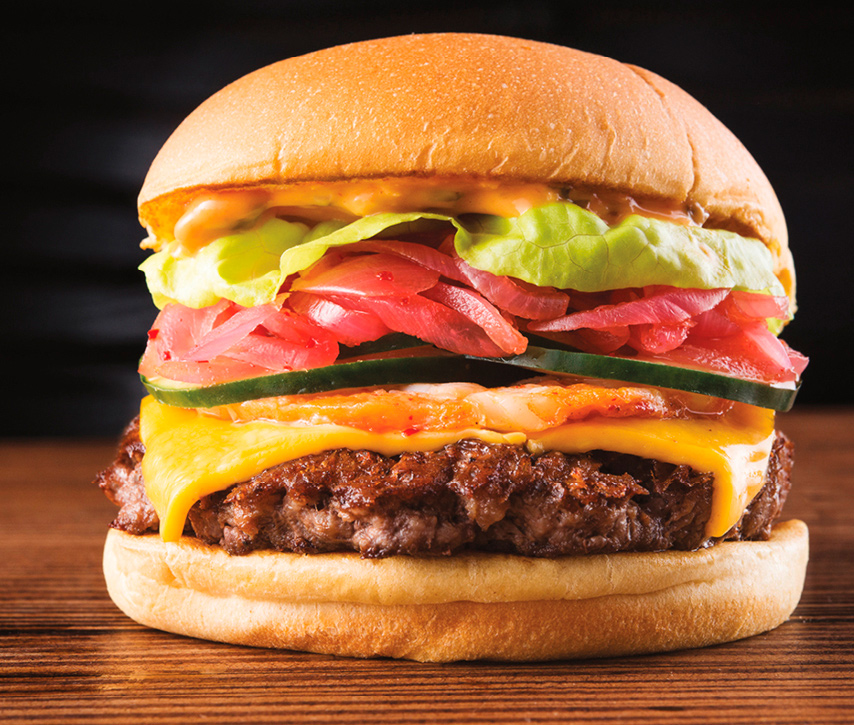
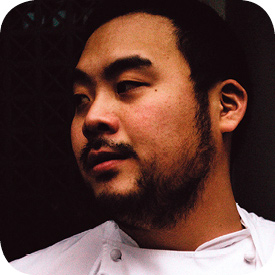
David Chang surprises with a shrimp patty and homemade pickles.
MAKES 4
This is our adaptation of a great collaborative burger we made for our 10th Anniversary. David suspected his fans would expect him to do a pork-topped burger: he wanted to surprise. His idea was to add smoky richness with shrimp patties, then layer on the crunch (pickles), and the umami with his inspired sauce.
4hamburger buns, toasted (this page)
Momofuku Hozon Sauce
4cooked ShackBurger patties
4cooked Shrimp Patties
Cucumber and Red Onion Pickles
4leaves bibb lettuce
To assemble, spread Momofuku Hozon Sauce on both buns. On the bottom bun, layer on the cheeseburger, then the shrimp patty. Top with a few slices of the cucumber and red onion pickles, and a lettuce leaf.
For the Momofuku Hozon Sauce: Combine 4 tablespoons each of Kewpie mayonnaise, ketchup, and miso paste in a small bowl. Mix and set aside.
For the Shrimp Patties: In a food processor fit with a steel blade, combine 1 pound 16-20 count shrimp, shelled and deveined, 1 tablespoom Kochu karu (Korean chili powder), and 1 teaspoon kosher salt. Process until the shrimp has the consistency of loose sausage.
Divide the processed shrimp into 4 equal pucks. Place into an oiled cast-iron pan over medium-high heat, and flatten with a greased spatula. When the bottom turns a slight pink color, flip the patty and cook through, about 2 minutes on each side.
For the Cucumber and Red Onion Pickles: Slice 1 Kirby cucumber into ⅛-inch discs, add 1 tablespoon of sugar and 1 teaspoon salt and combine in a small bowl. In another bowl, combine 1 red onion, peeled and thinly sliced with a tablespoon each of sugar and salt. Let both sit for 10 minutes. Taste and add more sugar or salt if needed. Refrigerate for up to 4 hours.


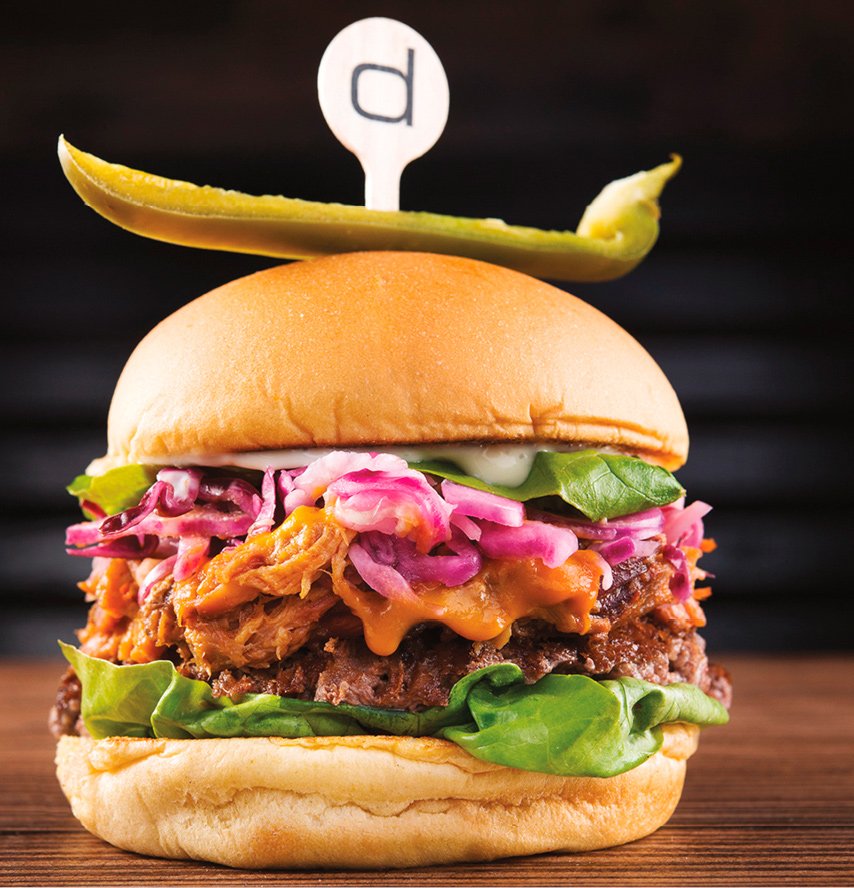
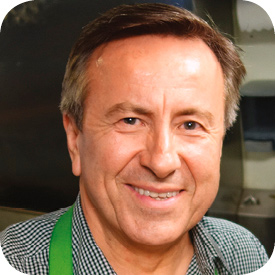
Daniel Boulud piles on the barbecue sauce, pulled pork, and slaw.
MAKES 4
The same year our first hot dog touched down in Madison Square Park, Daniel turned his vaunted culinary prowess into the now-famous db Burger (this page). With Shake Shack’s similar fine dining roots, we were thrilled to kick off our 10-year celebration with this adaptation of his recipe.
4hamburger buns, toasted (this page)
¼cup Jalapeño Mayonnaise
8pieces bibb lettuce
4cooked ShackBurger patties
2cups good quality pulled pork, mixed with ½ cup of your favorite barbecue sauce, warm
Cabbage Vinegar Slaw
4pickled jalapeños
4small wooden skewers
To assemble the burgers: Spread Jalapeño Mayonnaise on the bottom and top buns. Add a leaf of lettuce to the bottom bun, then a burger patty, the pulled pork (Daniel like a bourbon-based North Carolina–style mustardy sauce), the cabbage slaw, and more bibb lettuce. Stick a pickled jalapeño on a skewer and into the top bun.
For the Jalapeño Mayonnaise: In a small pan over medium-high heat, add 1 teaspoon of olive oil and sauté 1 small jalapeño pepper, seeded and finely diced, until just cooked, about 3 minutes. Add 2 teaspoons white wine vinegar and reduce completely. Cool the jalapenos in the refrigerator. Daniel would make the mayonnaise, but you can mix ¼ cup of your favorite mayo with the cooled jalapeños in a small bowl.
For the Cabbage Vinegar Slaw: Thinly slice one head red cabbage, toss with salt, and let drain for 3 hours. In a small pot, combine ½ cup apple cider vinegar, ½ cup sugar, ¼ cup mustard, 1 grated garlic clove, and a pinch of salt; bring to a boil. Put the cabbage in a large bowl and pour the hot sauce over it. Chill for at least 3 hours and drain excess liquid before using.


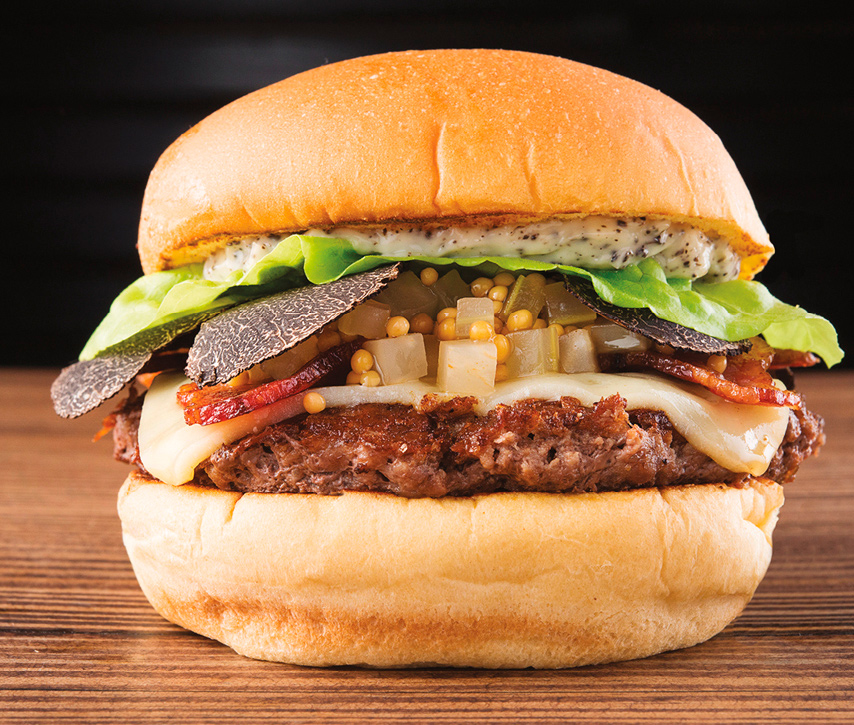

Daniel Humm dashed across Park Avenue bearing black truffles.
MAKES 4
Since we were literally born out of the kitchen at Eleven Madison Park, it was a thrill to serve this truffle-laden burger on Shake Shack’s anniversary 10 years later. EMP owner Will Guidara even actually rolled their champagne cart out to the Shack in Madison Square Park to help us celebrate.
4hamburger buns, toasted (this page)
4tablespoons Truffle Mayonnaise
4slices Gruyère
4cooked ShackBurger patties
8strips cooked bacon, broken in half
1medium black truffle (half finely chopped, half shaved)
Celery Relish
4bibb lettuce leaves
To assemble the Humm Burger, spoon 1 table-spoon truffle mayonnaise on the top of each bun. Put the Gruyère-topped ShackBurger on the bottom, then the bacon, the celery relish, the shaved black truffle and the lettuce.
For the Truffle Mayonnaise: To ¼ cup of your favorite mayonnaise in a small bowl, add a finely chopped half truffle and mix well.
For the Pickled Mustard Seeds: In a saucepan, combine 1 cup white balsamic vinegar, ½ cup sugar, ½ water, and 3 tablespoons kosher salt. Bring to a simmer, stirring to dissolve. Pour the hot pickling liquid into a glass container over ½ cup mustard seeds. Refrigerate overnight.
For the Celery Relish: Bring a pot of salted water to a boil. Prepare an ice bath. Peel and dice small ½ cup celery root and ¼ cup celery. Blanch separately until tender, and shock both in the ice bath. Drain the celeries and combine with ¼ cup half-sour pickles, diced small, 3 tablespoons drained pickled mustard seeds (previous), and 1 tablespoon white balsamic vinegar in a medium bowl. Season with salt and set aside.



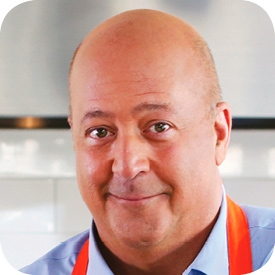
Andrew Zimmern wasn’t happy till he got his goat.
MAKES 4
Andrew has always been a huge Shake Shack fan and it was such a treat to work with a chef and charismatic TV personality who loves food and travel so much. What he made was a Midwestern butter burger, featuring his beloved goat.
4hamburger buns, toasted (this page)
20ounces ground goat meat divided into 4 patties (recommend 75/25 lean-to-fat ratio)
Salt and pepper
Seasoned butter
Roasted tomatoes
Roasted onions
Bread and butter pickles
Season the goat patties with salt and pepper. Grill the burgers until medium-rare. Place a dollop of the room-temperature, seasoned butter on the burger to melt just before it’s finished cooking. Place the goat patty on the bun, topping with roasted tomatoes and onions. Serve with bread and butter pickles.
For the seasoned butter: Let 1 stick butter come to room temperature. In a stand mixer with a paddle, whip the butter until it is creamed, about 20 seconds. Add 1 tablespoon minced parsley, 1 tablespoon finely minced shallot, 1 tablespoon minced tarragon, ½ teaspoon ground white pepper, 2 tablespoons lemon juice, and ½ teaspoon Colman’s dry gound mustard. Scrape down the sides of the mixing bowl and pulse the mixer to evenly distribute the herbs and butter.
For the roasted tomatoes: Preheat the oven to 225°F. Halve 12 Roma tomatoes. In a mixing bowl, toss with 3 tablespoons olive olive oil to coat, and season with salt and pepper. Place the tomatoes cut-side up on a small baking pan lined with parchment paper. Bake in the upper third of the oven for 6 hours. The tomatoes should be dried and crinkly, wrinkly but not burnt or crispy. You want them leathery on the outside and moist on the inside. Set aside.
For the roasted onions: Preheat the oven to 350°F. Leaving the trimmed root on, cut 2 onions top to bottom in half, and then cut each half in thirds so the onions don’t fall apart. Place the onions in a large bowl. Add 1 tablespoon olive oil and mix gently by hand. Season with salt and pepper. Place in a baking pan, and bake until brown and starting to appear charred. Set aside.


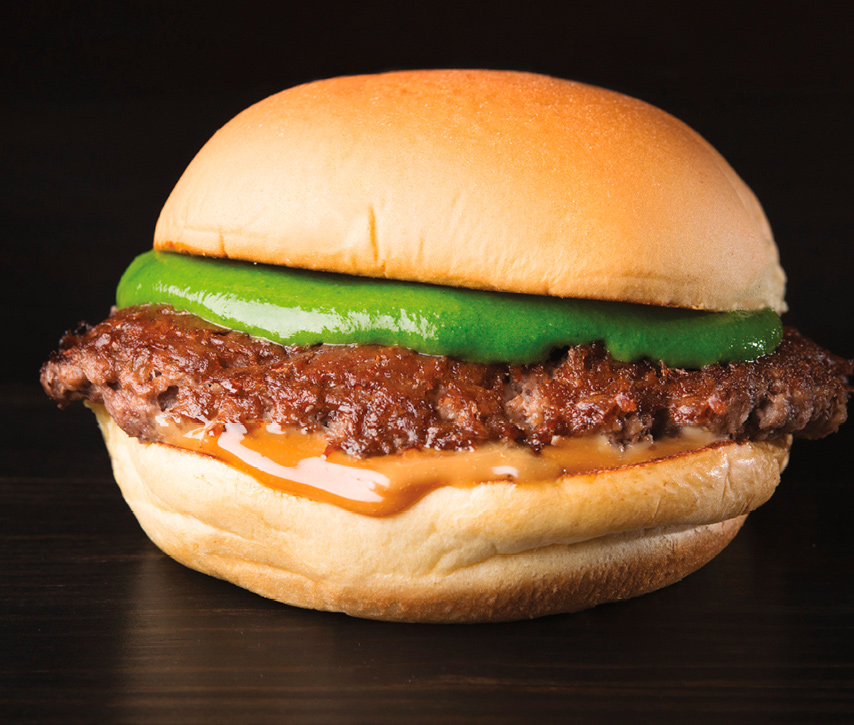

Massimo Bottura celebrates Columbus Day with Parmigiano-laced burgers.
MAKES 4
We’ve always admired Massimo’s Italian blend of whimsy and creativity. After all, his Osteri Francescana in Modena is considered among the best restaurants in the world. So when Massimo offered to create a special burger for Columbus Day to commemorate his roots in Emilia Romagna, how could we say no?
4hamburger buns, toasted (this page)
½packed cup finely grated Parmigiano-Reggiano
1pound very cold ground beef
Salt and freshly ground black pepper
1tablespoon olive oil
Balsamic Mayonnaise
Salsa Verde
In a large mixing bowl, fold the grated cheese into the ground beef until uniformly distributed. Lightly season with salt and pepper. Divide the mixture into 4 equal portions and form into ¾-inch thick patties.
Heat the oil in a large frying pan over medium-high heat. Once hot, add burgers to pan and cook until well seared, 2–3 minutes per side. Transfer burgers to a cutting board and let rest at least 2 minutes before serving.
To serve, spread bottom of each bun with balsamic mayonnaise, then top with a burger. Spread salsa verde over the burger and top with the bun.
For the Balsamic Mayonnaise: In a small bowl, combine 4 tablespoons mayonnaise and 2½ teaspoons aged balsamic vinegar. Season with salt.
For the Salsa Verde: Pour 2 tablespoons water over 1½-inch-thick slice day-old crusty white bread and allow it to absorb completely. In a blender or food processor, add the soaked bread, 5 tablespoons olive oil, 1 packed cup parsley leaves, 1 tablespoon capers, rinsed and dried, 3 anchovy fillets, ¼ clove garlic, ½ teaspoon white wine vinegar. Salt to taste and purée until smooth. Set aside.

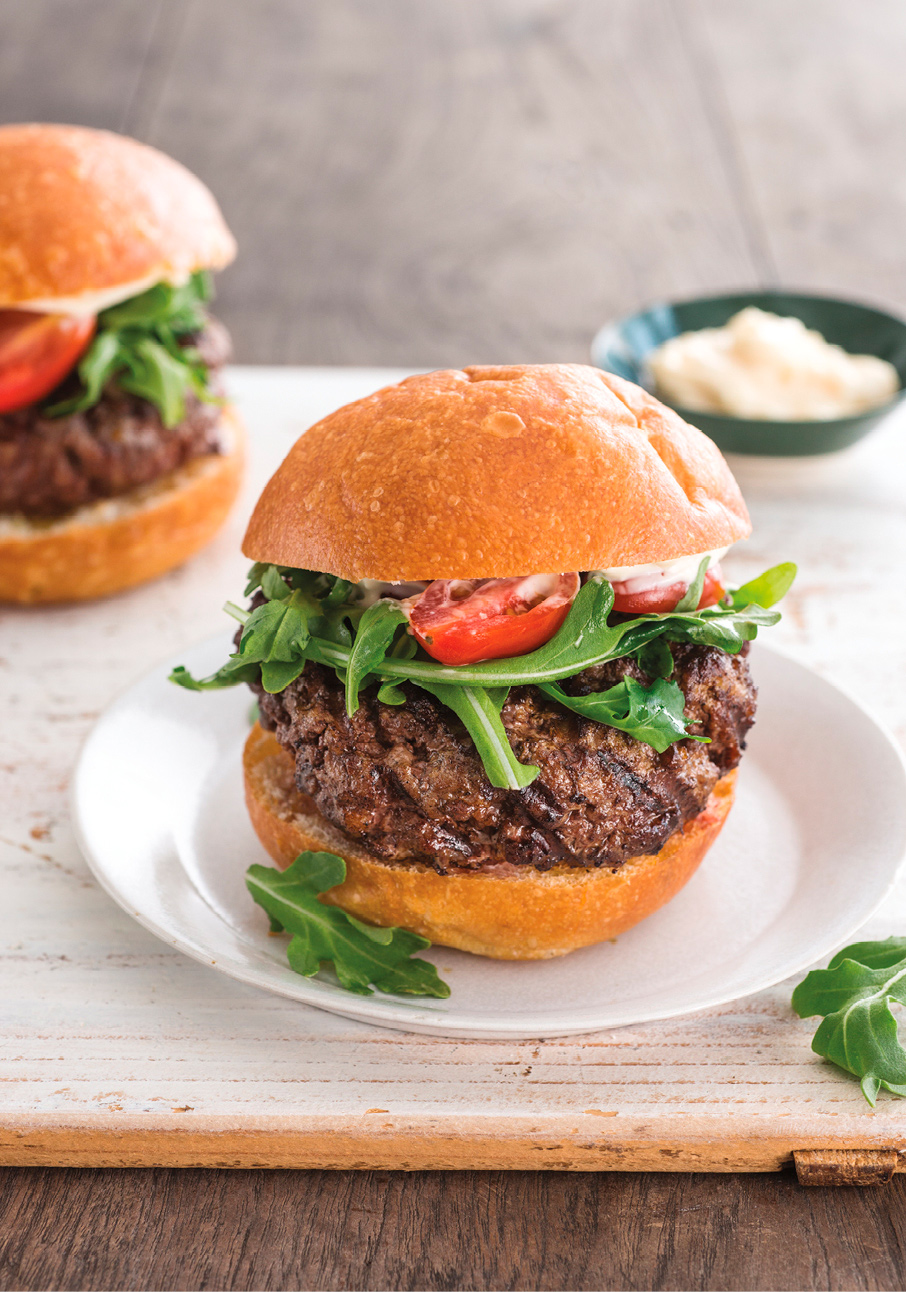
Pat LaFrieda reveals the burger of his dreams.
My favorite burger recipe is a simple one, for that’s what a burger is supposed to be. The quality of meat to be ground, or as we say, chopped, is vital. In fact, I’ll only eat burgers whose meat I’ve produced! The lack of transparency in country of origin, specific cuts used, and by-products in many burgers is frightening.
My meat preference begins with the breed. Black Angus has a consistent flavor profile that captures the salts of the protein with the sweetness of the fat. Animals’ age is another huge variable: my beef should be 20 to 24 months old. With older beef, the fat is not as sweet; it sticks to the sides of the grinding machinery and produces a pasty result.
There are vast differences in flavor among the 600 individual muscles in the animal. The cuts selected are important and are chosen for their flavor profiles, pricing structure, availability, or a combination of all these. (See recommendations, this page.)
I prefer an 8-ounce burger, 4 inches in diameter and an inch tall. Because I like a medium-rare center and a seared exterior, my meat goes onto the grill at 38°F, the normal temperature of a refrigerator. Letting meat reach room-temperature can be dangerous. To dress my burger? No ketchup please! American cheese, arugula, not lettuce, a dollop of mayonnaise, and firm, sliced grape tomatoes. A buttery brioche bun is an indulgent favorite. A bit of extra love right before serving matters: I like to toast the bun before I split it so it’s brown on the outside and super-soft inside.